Towards Documentary Choreography. Intermedial Approaches when Working with Extra-Aesthetic Materials - Arkadi Zaides (18 & 19/12/2025)
Arkadi Zaides
- 18 December 2025, 20:00-21:15: The Cloud performance, Minnemeers NTGent, Minnemeers 8, 9000 Gent, info & tickets
- 19 December 2025, 10:00-12:30: PhD defence, Minnemeers NTGent, Minnemeers 8, 9000 Gent, free entrance
- Joint PhD with Ghent University
- Supervisors: Timmy De Laet (University of Antwerp), Annouk Van Moorsel (Royal Conservatoire Antwerp), Jelena Jureša (KASK & Conservatorium, HOGENT), Christel Stalpaert (Ghent University)
Abstract

In this artistic doctoral research, Arkadi Zaides explores how choreography might respond to today’s societal urgencies and topical issues. He develops a documentary approach to dance and embodied practices, where – unlike in theatre, film, or the visual arts – the use of historical facts and documentary sources is only now beginning to emerge. More specifically, Zaides examines how, through various formats, documents can be reimagined choreographically to reveal divergent – and at times conflicting – ways of engaging with society and the arts, particularly in times of crisis.
The research unfolds through three major projects: Necropolis, Necropolis-United (later updated to Shu-Ha-Da), and The Cloud, each exemplifying distinct strategies of societal engagement and intermedial experimentation. Necropolis confronts the deadly consequences of migration through choreographic and cartographic protocols that trace grave locations of people dying on migration routes while cooperating with communities and institutions to bring dignity to these dead. This work extends into Necropolis-United: Integrated Data-Platform of Dead and Missing Migrants in Europe (I005522N, 2022–2026), an interdisciplinary project supported by the Research Foundation—Flanders (FWO). Under its updated title Shu-Ha-Da, this project brings together artists, scholars, technologists, and activists in the collaborative construction of commemorative information systems honoring dead migrant people and questioning the dissemination of sensitive data in an ethical and sustainable way. The Cloud expands the migration topic to environmental terrains, investigating the pervasive algorithmic “cloud” of Artificial Intelligence within the context of ecological crisis. It focuses specifically on the Chernobyl catastrophe to explore the entanglement of human and non-human actors as well as material and immaterial infrastructures.
(Photo Giuseppe Follacchio Courtesy Orbita Spellbound)
On the occasion of his doctoral defence, Arkadi Zaides invites external jury members Rabih Mroué and Yumna Masarwa to share their respective practice with students, researchers and a wider audience.
Arkadi Zaides (b. 1979, Homel, Belarus, former USSR) is a choreographer, performer, and researcher whose work investigates the effects of social and political contexts on individuals and communities, through the use of documentary materials. He is interested in the notion of the border—understood both literally, by identifying choreographies emerging in border areas, and metaphorically, by exposing discourses and apparatuses at work in relation to the figure of “the other.” For the past two decades, Zaides’ works have been presented worldwide, and he has received numerous awards, among them the Émile Zola Prize for Performing Arts (2013) for his engagement with human rights issues. From 2024 to 2027, he is an associated artist with the Montpellier Danse Festival in France.
Zaides earned a master’s degree from the AHK Academy of Theater and Dance in Amsterdam, and since 2021 he has been a doctoral researcher in the arts at the University of Antwerp, Royal Conservatoire Antwerp, Ghent University, and KASK & Conservatorium (HOGENT – Howest). He is a member of the CORPoREAL research group at the Royal Conservatoire Antwerp and of S:PAM (Studies in Performing Arts), a research unit at Ghent University. In addition, Zaides continuously develops platforms that promote contemporary performance discourse. Together with scholar, curator, and dramaturg Sandra Noeth, he initiated Violence of Inscriptions at HAU Hebbel-am-Ufer in Berlin (2015–2018), a series of events that brought together artists, thinkers, and human-rights activists to negotiate the role of the body in producing, negotiating, and confronting structural violence. Within his doctoral trajectory, Towards Documentary Choreography has evolved into a series of encounters at various venues in Brussels, bringing together artists, scholars, and activists to examine how documentary materials can be embodied, reimagined, and performed. www.arkadizaides.com
The medium is the memory, the support the souvenir - Nicolas Baeyens (13/12/2025)
Nicolas Baeyens
- 13 December 2025, Mekano Makerspace (S.MU-A.0.15), Ambtmanstraat 1, 2000 Antwerpen
- 14:30 visit to work/video
- 15:00 public defence
- 17:00 reception and book presentation
- Supervisors: Thomas Crombez (Royal Academy of Fine Arts Antwerp), Peter De Deyn (University of Antwerp)
Abstract

What happens when an artwork detaches from its material form and begins a life of its own in the mind of the viewer? This dissertation originates from an artistic practice of sharing and transforming sculptural fragments and evolves into a transdisciplinary exploration of art as shared thinking, as social action, and as a mediating object.
Making and viewing art is not a one-way street. The viewer does not merely look; they think, co-shape, and influence the artist. This reciprocal movement turns every artwork into a carrier of meanings that continuously shift with context, memory, and interaction. Looking at art is a creative act: it does not end with perception but persists in the imagination of the beholder.
As Beuys, Ono, Benjamin, and Latour each in their own way emphasize, the value of art does not lie in material fixation but in its capacity to set thoughts in motion, shaped by ever-changing contexts. Neuroscientific research supports this: art activates brain regions linked to empathy, planning, and reward, and fosters cognitive flexibility. These effects resonate beyond the artistic domain, influencing how we think, perceive, and coexist.

Art also transforms social relations. Participation is not a peripheral condition but a foundation: every artwork is part of a historical and societal network in which meanings circulate. The image fragment, the souvenir, becomes a catalyst that triggers memories and generates new interpretations.
This dissertation, like the artwork itself, seeks no finality. It is a meandering trigger. Art touches upon a broader urgency: it creates space for collective critique, ethical remembrance, and cognitive growth.
ÎNTERZONE (architecture of the ritual space) - Bart Van Dijck (7/11/2025)
Bart Van Dijck
- 7 November 2025, room K 2.1, Royal Academy of Fine Arts, Antwerp, Mutsaardstraat 31, Antwerp
- 10:40 - 12:30 Individual card reading sessions with Înterzone Threshold Cards - By appointment only through: bart.vandijck@ap.be
- 14:00 - 16:00 Public defence with jury members: Arjen Mulder, Barbara Raes, Els Dietvorst, Elvira Crois, Nico Dockx, Paolo Favero and Walter Weyns
- 16:00 Reception
- Language: Dutch
- Please confirm your presence before 1 November 2025 bart.vandijck@ap.be
- Supervisors: Nico Dockx (Royal Academy of Fine Arts Antwerp), Walter Weyns and Paolo Favero (University of Antwerp)
Abstract

In this artistic doctoral research, visual artist Bart Van Dijck explores the transformative potential of art and rituals. He investigates how a ritual space can be constructed and how these rituals can generate an empowering and healing impact on the participants.
Over the past twenty years, Bart Van Dijck has developed a hybrid artistic practice consisting of drawings, videos, documentaries, performances, photographs, sculptures and installations. These works were mostly inspired by folklore, subcultures and ritual gatherings. A few years ago, Van Dijck developed a desire to no longer consider these rituals as mere sources of inspiration. The artist decided to create rituals himself with different groups of people. The transformation of his artistic work into a more social and participatory practice evolved and deepened thanks to this research project. No longer the image, but the participant's experience has taken centre stage.
During the research period, Van Dijck developed a number of participatory and recurring projects, sometimes linked to a specific moment in the year and sometimes in collaboration with other artists. He considers these projects to be social sculptures or threshold rituals, in which the participants collectively cross a symbolic threshold. These thresholds are moments of transition, during which healing and growth processes can take place. In this respect, the snake, which sheds its old skin in order to grow, is a powerful metaphor. The title ‘Înterzone’ refers to this space-in-between, known in anthropology as the liminal phase or threshold stage of rites of passage. Înterzone is a temporary, ephemeral space where people can come together and share experiences in connection with each other and the (natural) environment.
In order to unlock his research in a more poetic and indirect way, Van Dijck created a set of cards consisting of 61 drawings (Înterzone Threshold Cards). The purpose of the cards is to create interaction, stimulate imagination and intuition, and activate unconscious knowledge.
Becoming, belonging and vanishing: an (autobiographical) exploration of photo studios in Quetta, Pakistan - Danial Shah (23 & 24/10/2025)
Danial Shah
- 23 October 2025 - FOMU Antwerp
- 20:00 - 23:00 Opening Exhibition 'Belonging, Becoming and Vanishing'
- Free entrance
- 24 October 2025 - FOMU Antwerp (entrance via Cinema Lumière)
- 12:15 - 14:00 Film Screening of film 'Make it Look Real' with intro by Christopher Pinney
- 14:15 - 16:15 Presentation & public defence
- 16:30 Reception
- Please register here to attend.
- 12:15 - 14:00 Film Screening of film 'Make it Look Real' with intro by Christopher Pinney
- Supervisors: Paolo Favero (University of Antwerp), Ruth Loos (Sint Lucas Antwerpen)
- Fotomuseum Antwerpen, Waalsekaai 47, Antwerpen
Abstract
How do we perform identity and desire in front of a camera? What happens before, during, and after a photograph is taken? Danial Shah (born 1989, Pakistan) presents his PhD in artistic research on the photo studios of his hometown Quetta in Pakistan. Shah grew up fascinated by these studios, known for their hand-painted backdrops and physical props. These are spaces of transformation—where performance, identity, and aspiration meet. Over time, digital technology has reshaped these studios. Photoshop and digital collage have introduced new possibilities for portraiture. Yet portraits continue to express a wide range of desires—from challenging ruling ideologies to declaring love or recovering from heartbreak. In parallel with this transformation, Shah’s own practice has shifted from analogue to digital, working as a documentarian, photojournalist, and filmmaker. While studios confine, reproduce and challenge society within their walls, Shah’s work engages with the world beyond those boundaries. His research explores the intersection of these two approaches—studio and documentary photography. Photo studios in Quetta are rapidly disappearing due to technological change. With them, unique rituals, aesthetics, and forms of social interaction are also vanishing—making Shah’s research especially timely. Since 2013, and throughout his ongoing PhD research (2021–2025), he has asked: “What is real in photography? How are desires projected in a single image?” He also reflects on his own practice, asking: “What shapes my photographic gaze? Can I share the beauty of my native country without exoticizing it?”. His multimodal artistic work explores the nature of photography from a transnational perspective.
(Photo by Muhammad Sakhi)
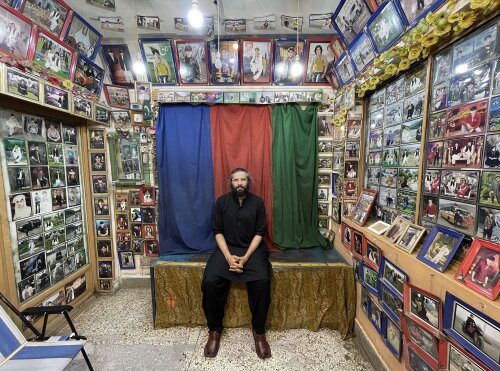
Resonant Atmospheres: The Techno-Performance of Affection - Mona Hedayati (30/06/2025)
Mona Hedayati
- 30 June 2025, 15:00, Het Bos - Antwerp - no registration needed
- Supervisors: Nele Wynants (University of Antwerp), Frederik De Bleser (Sint Lucas Antwerpen) and Bart Simon (Concordia University)
- Joint PhD with Concordia University, Montreal, Canada
Abstract
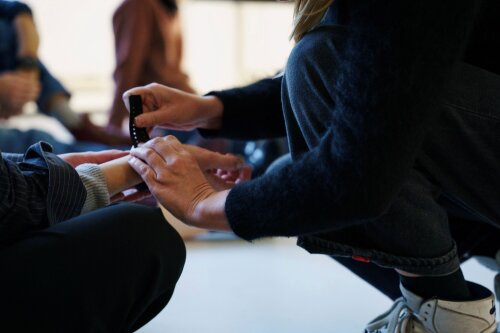
As an artistic research project, Resonant Atmospheres creates and analyzes a series of live, time-based artistic events that subvert the logic of using biosensors as instruments of emotion recognition—associated with the field of affective computing—by repurposing them to structure affective atmospheres. The project focuses on how biosensing technologies, when removed from their intended function, can contribute to making the intensity of migration and exile felt by considering their capacity to mediate encounters between audiences, bodies, and media forms. To this end, Resonant Atmospheres relies on the ways that biosensors data can be transformed into sound and visuals that reveal and conceal the context of exiled migration. Alongside the atmospheric conditions of each space, these elements create possibilities for incommunication—non-narrative style ways of exchange in which meaning is not clearly transmitted or resolved but feeling the affective charge is foregrounded. The first experiment, Breathless, foregrounds me as the performer and audience as onlookers that experience the intensity of the sound affected by my biosensor readings along with snippets of videos relevant to my experience of migration, revealing limitations in its ability to generate relational engagement. In response, Curves & Reverbs I-III introduces participation, testing how contributing to the construction of the atmosphere can shape a distributed affective experience across bodies. By analyzing these experiments and their unfolding, the project contributes to a novel understanding of how the conglomeration of the technical, the artistic, and the socio-political can create situated scenarios beyond the limitations of each approach.
(Photo by Danial Shah)
Singing The Silences. A journey within a journey, on holding sonic spaces - Hoda Siahtiri (10/06/2025 & 11/06/2025)
Hoda Siahtiri
- 10 June 2025, GC De Kriekelaar - Schaarbeek
- 19:00 - 21:30 Artistic Performance + conversation
- 11 June 2025, GC De Kriekelaar - Schaarbeek
- 15:00 Presentation and defence
- 17:00 Reception
- Supervisors: Paolo Favero (University of Antwerp), Joachim Ben Yakoub (Sint Lucas Antwerpen)
Abstract
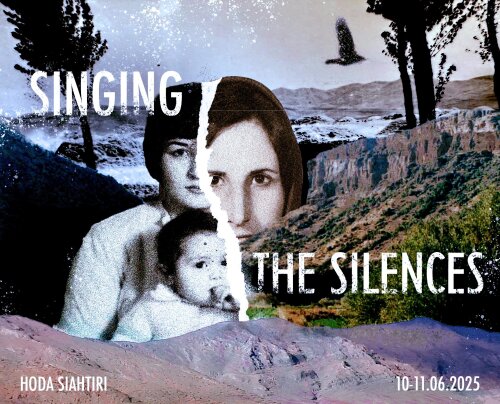
Singing the Silences (Part I)
Performance + Conversation
Tuesday 10th of June
Singing The Silences is a musical performance that tells the story of an encounter with loss. In this story Hoda Siahtiri is coming to voice, weaving her way to her first home, calling to the fore her heart's compass. Together with Guillaume Soufrice, she holds space for remembrance, precedence, transcendence and grief. Singing nearby the Bakhtiari women who passed on the songs that came before her, she invites us to listen to the silences and their transformation.
The performance will be followed by a conversation with Hoda Siahtiri, Joachim Ben Yakoub and Rolando Vazquez.
Singing the Silences (Part II)
Public Defense + Reception
Wednesday 11th of June
You will hear the story of my artistic research journey freely floating in the songs of Bakhtiari women of the Zagros mountains, but not only that. A journey within a journey, of singing the silences that started in 2017. Within this period, not only I, but the whole world, went through unprecedented turmoil. Some believe that the old world came to an end, and we are going through a period of understanding and digesting what this end means and how one gets familiar with death and end energy. Regarding life's cyclical death and rebirth dynamic, it is essential to acknowledge that my story does not begin where I start. My story is part of a longer story that precedes me, and has been told already and will be told by someone else. Or in the words of ever inspiring Trinh T. Minh-ha (1989, 123):
“My story, no doubt, is me, but it is also, no doubt, older than me. Younger than me, older than the humanised. Unmeasurable, uncontainable, so immense that it exceeds all attempts at humanising. But humanising we do, and also overdo, for the vision of the story that has no end—no end, no middle, no beginning; no start, no stop, no progression; neither backward nor forward, only a stream that flows into another stream, an open sea—is the vision of a madwoman.”
Dedicated “to the dead of these years, who were the most loving of the living”.
Sima, Zari, Anis, Johan & Masoud.
La Grande Bouffe - challenges in the performance of musical comedy - Stijn Saveniers (24/05/2025)
Stijn Saveniers
- 24 May 2025, HERMESstudio Wijnegem - please confirm your attendance HERE
- 19:00 Doors open
- 19:30 Presentation and defence
- 21:30 Reception
- Supervisors: Bart Eeckhout, Marlies De Munck (University of Antwerp), Frank Agsteribbe (Royal Conservatoire Antwerp)
Abstract
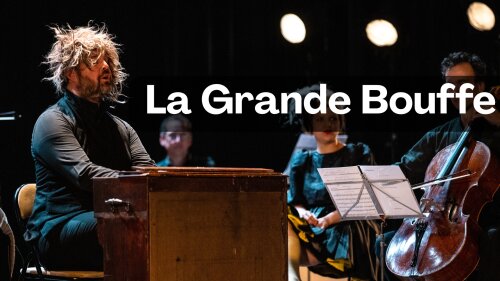
Photo © Björn Comhaire
This study examines the mechanisms and effectiveness of musical humour within the genre of operetta, with the aim of identifying the intrinsic characteristics and structural elements that contribute to its comic effect. As existing analytical methods proved inadequate in capturing the complexity of musical humour in this genre, a tailor-made analytical framework was developed. Inspired by constructivist principles, this method provides a systematic approach to analysing humorous elements in musical compositions and performances.
At the core of this research is the development of a taxonomy of ‘musical humour techniques,’ which categorises and analyses a wide range of compositional and performance-related aspects. This taxonomy offers a thorough and detailed classification of techniques that contribute to the comic construction of operetta.
To validate the taxonomy and the analytical method, three case studies are examined in detail: La Périchole (Offenbach), Une Ruse de Pierrette (Dell’Acqua), and Brueghelkermis (Kennes). These case studies span diverse historical and cultural contexts, thereby assessing the applicability and versatility of the proposed analytical method across various operetta repertoires. The comparative analysis of these works provides valuable insights into compositional strategies and performative choices that enhance the humorous effect within the genre.
Through this systematic approach, the study contributes to the scholarly discourse on musical humour and offers a novel perspective on the performance of operetta repertoire. The research highlights the unique dramaturgical role of music in comic contexts and underscores the importance of performative awareness in the interpretation of musical humour.
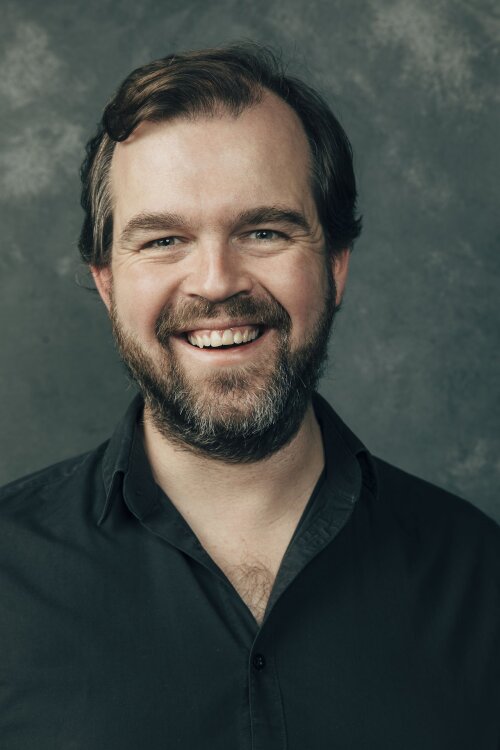
Biography
Stijn Saveniers is a Belgian conductor, researcher, and coach with a focus on comic opera and theatrical music. He is artistic director of Volksopera, an Antwerp-based initiative that both preserves and reimagines the comic repertoire.
As a doctoral researcher at the Royal Conservatoire of Antwerp, ARIA and the Orpheus Institute (docARTES), he investigates the role of humour in operetta. In May 2025, he will defend his dissertation, La Grande Bouffe: Challenges in the Performance of Musical Comedy, accompanied by a performance of excerpts from the Belgian operetta Brueghelkermis.
Saveniers studied in Leuven and Maastricht, receiving Master’s degrees in cello and orchestral conducting, and was awarded the Hustinckx Prize. His work spans opera, operetta, oratorio, and contemporary music, including collaborations with HERMESensemble and the Venice Biennale.
Since 2023, he teaches at the Royal Conservatoire of Antwerp, where he is a member of the vocal department as repertoire coach. He also contributes to critical editions for the Study Centre for Flemish Music.
Photo © Filip Van Roe
The traditions of mandolin music in the regions of Asia Minor, Athens, the Ionian Islands and Crete - Maria and Elina Markatatou (15/05/2025)
Maria and Elina Markatatou
- 15 May 2025, De Singel - Witte zaal - no registration needed, live stream via following link
- 16:00 - 17:40 Presentation & Public Defence
- 17:40 - 18:20 Concert
- 18:20 - 19:10 Deliberation, laudation and closing words
- 19:10 - 21:00 Reception
- Supervisors: Marc Jacobs (University of Antwerp), Liselotte Sels and Yves Senden (Royal Conservatoire Antwerp)

Abstract
This study examines the mandolin’s presence, repertoire, and performance practices in three regions—Athens, the Ionian Islands, and Crete—as well as among Greek-speaking communities of Asia Minor. Each region has developed distinct mandolin-playing practices shaped by historical, social, and cultural influences. Despite their significance, these practices remain underexplored in academic research.
Employing a multidisciplinary methodology that integrates archival research, fieldwork, and artistic experimentation, the study explores the mandolin's role in these musical environments and its evolution from the late 19th century to the present. Historical and contemporary sources—including early recordings, manuscripts, oral histories, and performance practices— are examined to comprehensively understand these traditions.
The research focuses on several key areas:
- The mandolin’s role in the urban musical landscape of late 19th- and early 20th-century Athens and among Greek-speaking communities of Asia Minor, particularly in relation to Estudiantina ensembles in Asia Minor and Mandolinates in Athens.
- The repertoire and performance practices of the Ionian Islands, particularly kantades and their connection to local mandolin ensembles.
- The integration of the mandolin into Cretan musical practices, especially in relation to dance music and informal gatherings (parea).
This study addresses critical questions, such as: What are the characteristic performance techniques and musical idioms associated with these traditions? How have oral and written transmission processes shaped their repertoire and playing styles? What role has the mandolin played in the broader cultural and musical networks of these regions? How can artistic research methodologies contribute to understanding and disseminating these practices today?
As an artistic research project, the study engages with these traditions not only through historical inquiry but also through performance-based methods. By reconstructing repertoire, experimenting with playing techniques, and developing new approaches to teaching and interpretation, the research contributes to the transmission and revitalisation of these musical practices. The findings are disseminated through concerts, workshops, and educational materials, fostering cross-cultural engagement and contemporary artistic applications.
This research is conducted as a twin PhD, with each dissertation focusing on different aspects of these traditions. One dissertation examines the repertoire and performance practices of the Ionian Islands and Greek-speaking communities of Asia Minor, particularly how the mandolin was used in urban musical life before the Asia Minor Disaster of 1922 and how its traditions continued among musicians who immigrated to Greece. The other dissertation investigates the mandolin’s presence in Athens and Crete, exploring its historical role in Athenian Mandolinates and its integration into living musical traditions in Crete. By integrating historical analysis, performance studies, and artistic research, this study enhances the understanding of how these traditions developed, how they continue to evolve, and how they can be communicated to new audiences within and beyond Greece.
(image by Giorgos Andreou)
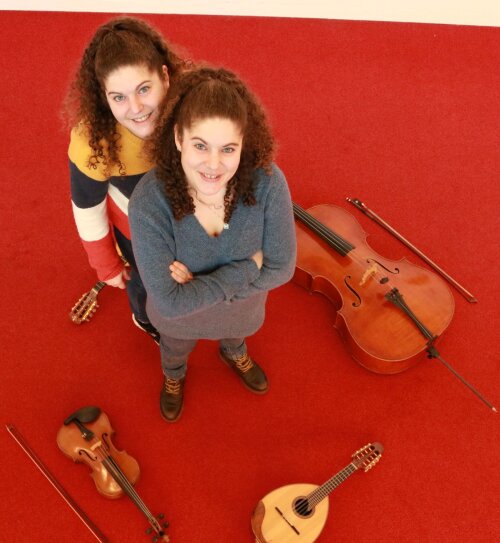
Biography
Elina and Maria Markatatou are mandolinists, educators, and artistic researchers based in Antwerp, Belgium. Originally from Heraklion, Crete, they both studied mathematics at the University of Ioannina while receiving formal music education in harmony and counterpoint at the Filippos Nakas Conservatory. Early in their careers, they performed extensively across Greece, engaging with a broad repertoire of urban and regional music traditions.
In 2013, they moved to Belgium to pursue advanced studies in mandolin performance at the Royal Conservatoire of Antwerp under the guidance of Professor Gerda Abts. Both obtained Bachelor and Master of Arts degrees in Music with distinction. Their Master’s research explored the four distinct traditions of mandolin music in Greece and laid the groundwork for their current doctoral projects.
Since 2019, they have jointly conducted PhD research in the Arts at the Royal Conservatoire and University of Antwerp. Their research focuses on the mandolin repertoire and performance practices of the Ionian Islands, Crete, Athens, and the Greek-speaking communities of Asia Minor. Their methodology draws on artistic research principles and combines embodied performance, transcription, archival investigation, and collaboration with musicians. Through this practice-led approach, they explore idiomatic techniques, processes of transmission, and the interplay between oral and written sources.
Alongside their research, they teach mandolin, chamber music, and music initiation at several music academies across Flanders. Beyond their academic work, Maria and Elina have given concerts, workshops, and masterclasses in Belgium, the Netherlands, Germany, Ukraine, and Greece. Their artistic projects include performances, collaborations with ensembles and mandolin orchestras, and educational initiatives engaging international participants.
(photo by Beatriz Laborda Gonzalez)
Inter-Relational Creativity. Fostering Collaborative Creativity through Skill-Based Training in Fashion Education - Andrea Cammarosano (02/04/2025)
Andrea Cammarosano
- 2 April 2025 - 15:00, Royal Academy of Fine Arts Antwerp - Campus Fashion, Nationalestraat
- Supervisors: Annick Schramme (University of Antwerp), Walter Van Beirendonck (Royal Academy of Fine Arts Antwerp)
Abstract
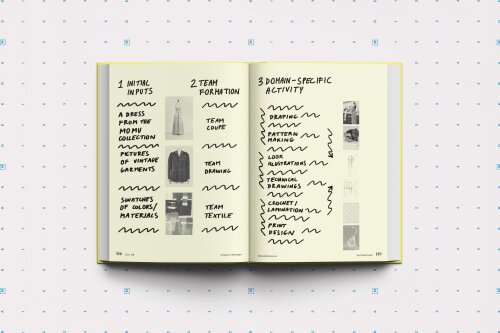
This research investigates the dynamics of creative collaboration within fashion education, focusing on the ideation process behind a fashion collection. While in the industry, this process relies on collaboration across diverse roles, skills, and ecosystems, fashion education often emphasizes an individual approach, with students undertaking all creative roles to develop a singular personal vision. The study examines the tension between the industry’s collaborative nature and education’s emphasis on individual creativity, aiming to develop models and strategies that foster collaboration in educational projects while enhancing both the creative process and its outcomes.
Creativity is a central aspect of this research. In the industry, it is a key factor behind the success of collections and careers, balanced with business, communication, and organizational strategies. In education, creativity is a cornerstone of the formative mission, emphasizing individual expression and personal growth. This is particularly evident in the Fashion Department at the Royal Academy of Fine Arts, whose alumni include renowned creative directors and designers. However, while their training focused on individual creativity, their success in the industry also depends on effective collaboration within teams. The research examines this collaborative aspect within the school environment to explore how individual and collective creativity interact in creativity-driven fashion education.
The entry point for this analysis is the notion of “Creative Languages.” These languages, as the research postulates, are linked to domain-specific skills but also facilitate the interaction and blending of personalities and styles, which are at the core of creative processes. Creative languages are central to the exchange of ideas and information between individuals during the ideation of a fashion collection. In this process, creativity operates at both the domain-general and domain-specific levels, with interpersonal interaction serving as a crucial factor in bridging these two dimensions. By analyzing this multi-dimensional framework, the study explores how the ideation of a fashion collection can evolve from an individual task into a collaborative process. The research specifically examines three creative languages—coupe, drawing, and textile design—which form the foundation of skill training at the Fashion Department.
By adopting this approach, the research provides insight into collaborative processes that integrate both social and material aspects. While many studies on collaborative creativity adopt sociological or humanistic perspectives, this research focuses on material culture as a medium for effective interpersonal exchange. The study integrates a multi-level theoretical framework, including individual creativity (Amabile, 1996), domain-specific versus domain-general creativity (Kaufman and Baer, 2005), and group creativity (Woodman, Sawyer, & Griffin, 1993).
The resulting model, termed the “inter-relational model,” provides a scaffold for skill-based training that nurtures both individual and collaborative creativity in fashion education.
(image: Photo Alessandro Di Palma; Styling Leonardo Persico; Post Production Gloria Torquati; Fabrics by Gruppo Cinque)
BOOK LAUNCH
Saturday 29 March 2025, at MoMu Antwerp
- 13:00 - 17:00 ongoing presentation of the book (at the MoMu Library)
- 16:00 Talk with Andrea Cammarosano and Johan Pas (at the MoMu Auditorium)
- 16:30 Talk with Andrea Cammarosano and Walter Van Beirendonck (at the MoMu Auditorium)
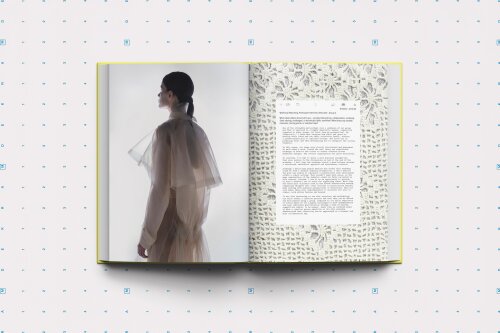
Form and Material in Visual and Auditory Perception - Amit Gur (9/01/2025)
Amit Gur
- 9 January 2025, De Singel - Gele zaal - no registration needed
- 17:00 – 17:30 Concert
- 17:30 – 19:30 Presentation & Public Defence
- 19:30 – 21:00 Reception (Witte Foyer)
- Supervisors: Erik Myin (University of Antwerp), Mathias Coppens (Royal Conservatoire Antwerp)
Abstract
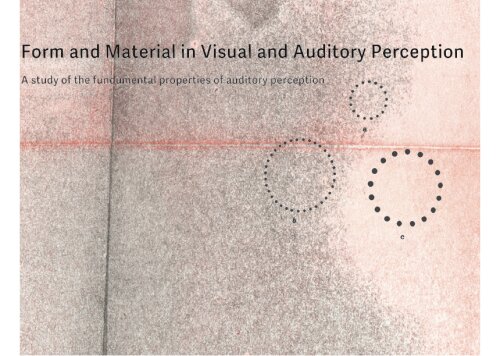
The primary objective of this research is to develop conceptual and empirical tools that define
form and material in the auditory realm. These phenomena are significant because they
provide comprehensive descriptions of perceptual scenes. However, in auditory and musical
contexts they are not clearly defined and remain open to interpretation. Terms like form,
material, and texture, though commonly used in musicians’ discourse, do not refer to
concrete perceptual phenomena but rather describe music in schematic and general terms. For
instance, two distinctly different pieces can both be described as having a polyphonic texture,
a ternary form, and consisting of similar musical material (scales, rhythms, etc.).
This thesis presents a theoretical framework that explains form and material in auditory
perception, based on models and principles from the visual domain. This approach poses
several challenges stemming from differences between the modalities. For example, in the
visual domain, we perceive objects as being located in specific positions within space, and
this spatial information is central to our understanding of the scene. In contrast, in the
auditory domain, the precise location of sound sources is less critical. We tend to focus on the
information conveyed by the sounds themselves—such as their timbre, pitch, and rhythm—
rather than where they are coming from. Another challenge is that in the visual context, form
and material are associated with structures in two- or three-dimensional space, while in the
auditory realm, time and aspects of sound, such as pitch, volume, and duration, are onedimensional.
For these and additional reasons, defining auditory form and material cannot be
achieved through a straightforward analogy to vision.
The starting point of my research is the study of visual form and material by the experimental
psychologist Erich Goldmeier (1936/1972). Goldmeier developed an empirical model called
“similarity with enlargement,” which explores perceptual features of visual form and
material. I begin by reviewing Goldmeier’s work along with other relevant studies on visual
perception. Next, I propose a methodology for drawing analogies between the visual and
auditory domains, that takes into account the differences between these modalities. Using this
methodology, I explore the properties of form and material in the auditory context and
propose my definitions for these properties. Finally, I present an auditory analogy to the
“similarity with enlargement” model, supported by an empirical study.
The appendix to this thesis features an artistic portfolio in which products of this research
(especially the notion of musical texture) serve as the departure point of the composition
process. This portfolio draws on my work as a composer as well as my experience teaching
musical perception and musical texture at the Conservatorium van Amsterdam.
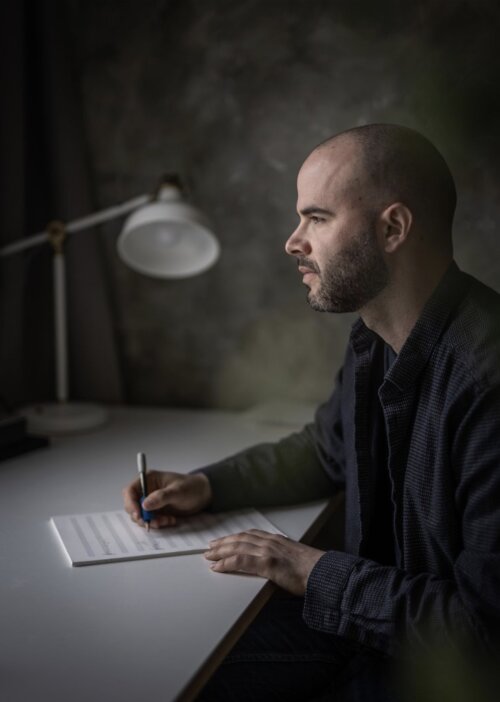
Amit Gur (1987) is a researcher and composer based in Amsterdam, where he teaches courses at the Conservatorium van Amsterdam related to his research. His composition work focuses on exploring texture in music, a theme he has developed through audiovisual installations, chamber ensemble compositions, and film scores. Amit's research bridges composition, Gestalt psychology, and analogies between visual and auditory perception.
Disarming Design - Politics of participatory practices - Annelys de Vet (29/11/2024)
Annelys de Vet
- 29 November 2024, Sint Lucas School of Arts (Showroom), Van Schoonbekestraat 143, Antwerp - no registration needed but a message of participation is appreciated via annelys.devet@kdg.be
- 14:30 Doors and exhibition open
- 15:00 Presentation and defence
- 17:00 Reception
- Supervisors: Pascal Gielen (University of Antwerp), Petra Van Brabandt (Sint Lucas Antwerpen)
Abstract
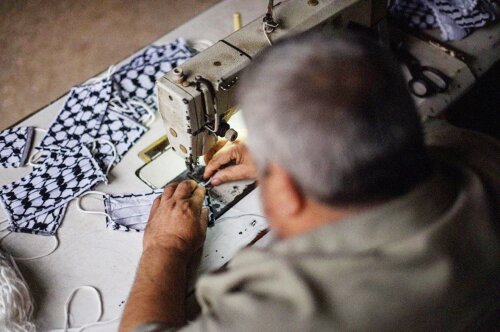
Image: Production of ‘Identity = health’ facemask, Gaza 2020. Photo: Abed Zagout
The public defence and the exhibition 'Disarming Design, politics of participatory practices' presents a dissertation, an installation and the series of Subjective Atlases along with objects from Palestine.
In our current political and economic landscape, sustaining an emancipatory design practice—one that aligns with progressive political beliefs and social values—poses significant challenges. My practice-based research explores how political agency can be strengthened in these conditions by engaging in participatory design processes.
The installation and dissertation document three long-term, self-directed, and participatory projects: a series of books (the Subjective Atlas series), a design label (Disarming Design from Palestine), and a master’s programme (Disarming Design at Sandberg Instituut). Each collaborative platform originated as a counterproposal that activates design as a methodology to amplify voices, mobilise communities, and create new opportunities. Aesthetics play a crucial role in this work, shaping the sensory, material, and emotional dynamics of our spaces, the materials we engage with, and the hospitality we practise.
By detailing the processes and outcomes of each of the three projects, from initiation to materialisation, and from distribution to impact, the dissertation offers an intimate and self-critical insight into the politics, tensions, and possibilities of participatory design practices. At the core is a drive to ask: How can design be liberated from the goal of finding ‘solutions’ and become a practice of agency and solidarity?
Anthony Braxton's Tri-Centric Thought Unit Construct and Post-War Western Art Music - Kobe Van Cauwenberghe (26/10/2024)
Kobe Van Cauwenberghe
- 26 October 2024 at 15:00, De Singel - Witte zaal - no registration needed
- You can also attend online via streaming link
- Supervisors: Pascal Gielen and Marlies De Munck (University of Antwerp), Miriam Overlach (Royal Conservatoire Antwerp)
Abstract
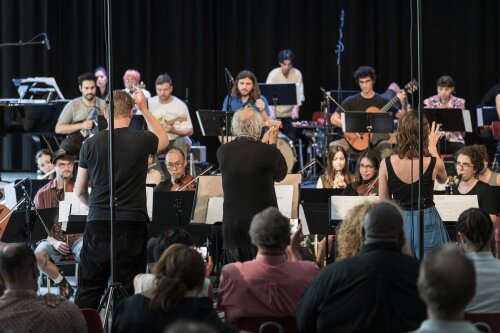
(photo Kristof Lemp)
The perception of the canon of post-war Western art music today is still strongly determined by a constructed dichotomy which keeps Western art music separate from evolutions and radical experiments in jazz and African-American music. The very extensive oeuvre and philosophical body of thought of the American composer Anthony Braxton, what he calls his Tri-Centric Thought Unit Construct (TCTUC), can be seen as the metaphorical elephant in the room. This unique oeuvre has been largely ignored to this day within the repertoire, discourse and performance practice associated with the canon of post-war Western art music. This research project takes Anthony Braxton's TCTUC as a starting point to see how I, as an interpreter of Braxton’s music, can contribute to a broadening of this canon.
My intention with this research is to provide artistic responses to the gaps within the existing discourse on post-war Western art music (see Braxton, Lewis, Piekut, Born, a.o.) by approaching a wide selection of Braxton’s compositions on his own terms. By putting these works as specific case studies on the agenda of relevant actors such as the conservatory, contemporary music festivals and concert series and through recordings and other media, I aimed to make a canon broadening possible through my practice as an interpreter. The results of this research, presented in the form of concerts, lectures, articles, workshops and recordings, are collected in a website published on Research Catalogue.
Hearing Glass: Synesthetic Correspondences in Music Based Audiovisual Art - Umut Eldem (22/10/2024)
Umut Eldem
- 22 October 2024, De Singel - Witte Zaal - no registration needed
- 16:30 – 17:00 Concert
- 17:00 – 19:00 Presentation & Public Defence
- 19:00 – 21:00 Reception (Foyer)
- Supervisors: Bart Eeckhout (University of Antwerp), Thomas Moore (Royal Conservatoire Antwerp)
Abstract
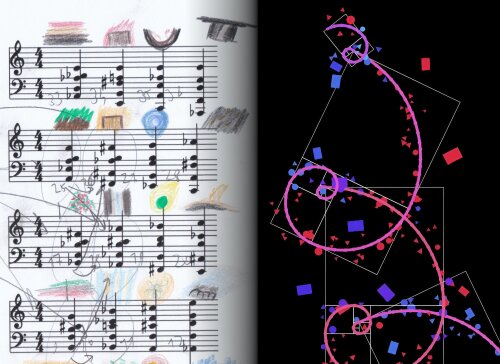
Hearing Glass is a research on the role of synesthesia and crossmodality in music-based audiovisual art. Weaving through the traditions of visual music, audiovisual instruments, and generative art, the project unfolds into a unique musical and audiovisual composition style.
The phenomenon of sound-color synesthesia, the experience of colors upon hearing sound, is the starting point of the research. An analysis of the works of synesthetic composers and audiovisual art reveals insights into novel concepts and techniques that bring sound and vision together in the compositional practice. The practice of audiovisual composition is then combined with new technology and creative coding in order to create performances, installations, and fixed-media works that contain synesthetic microcosms.
This research explores the transdisciplinary space between senses and disciplines, and the positioning of the musician and composer in this vast sea.
What do we need? Exploring how the creation and performance of new music can be regulating, healing, beneficial for wellbeing and provide self-care for neurodiverse musicians, including myself - Geoffa Fells (03/09/2024)
Geoffa Fells
- 3 September 2024 - 16:30, Royal Conservatoire Antwerp, Witte Zaal
- Supervisors: Henk de Smaele (University of Antwerp) and Thomas R. Moore (Royal Conservatoire Antwerp)
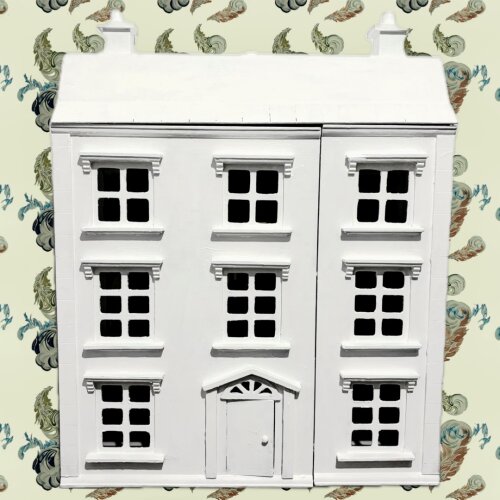
Abstract
Person who asks questions:
What is this PhD about??
Masha:
It’s about the fact that, because we have DID, there will be different answers to this question on different days.
Geoffa:
It’s about how I can forge a creative practice that enables me to care for myself and how a culture of care can enable under-heard, intersectional voices to be heard and shine in new music. It’s about how we have diversified facets of the neurosciences of safety (the Polyvagal Theory) including meditation, social interaction, play, and interactions with nature into modes of making, and how we’ve extended this to include empathy and care as modes of creation too. It’s about how I have embraced my multiplicity. You could call this radical inclusivity, but it also draws upon a culture of queering and critiquing current approaches to equality, diversity and inclusion. It’s about questioning everything that I am finding difficult, interrogating and asking, “Am I really the problem here?” Or is this just not accessible for me?
Ruby:
It’s a story told via wallpaper, white goods and furniture housed within the world of a doll’s house. The fridge is particularly riveting.
Edward:
I think our PhD has something to do with politics, but I don’t know the first thing about politics.
Geoffa:
This PhD is about knowing and not knowing. Understanding and not understanding. What we knew yesterday may not be what we know today. What we understand today, may hold no meaning tomorrow, but that’s okay. Our PhD is a baton carried by the different “me's", each with different types of intelligence. Some of us have taken our research forward by reading and dissecting written theories and academic texts; others have extended the research further using a scaffolding metaphor that engages them. The younger ones of us have looked at our research with highly emotionally intelligent and sensory perspectives. This PhD is about the benefits and approaches to radical inclusivity when the starting point is the inclusion of all the voices of one’s own mind.
Ruby:
It’s about world-building and imagination. My imagination is a safe haven where I can dream up the things that I need, from deep pressure squeezes to a number system or language that makes more sense. There are many things I need that feel completely out of reach in the real world.
Geoffa:
It’s about how the voices highlighted in my PhD, including my own, have been historically under-heard because they fall outside of society’s definition of ‘normal’ as shaped by capitalism. The ways in which we have included these voices has seen us working collaboratively and in ways that defy traditional artistic and productive values. For Sophie, every day is a foggy day, I used to consider her contributions, like her layering layering of sellotape, a waste of time, lacking in artistic value, but now I value her perspective of blankness, it’s almost like being in a sensory deprivation chamber. Her experience creates space for new, fresh ideas to emerge from the fog.
Masha:
It’s about frames, language, and perspective. How is an artwork interpreted in the bathroom of the doll’s house versus the attic? What is its title? What are our associations with these words and spaces that change the way we perceive colour, shape, or sound? How are these perspectives shaped by our previous experiences, our identities and our comfort zones.
Geoffa:
It’s autoethnographic. I am making art that will meet my needs and regulate me as a neurodivergent artist and so I share my growing awareness of how my needs today have been shaped by negative attitudes within mental health, social class, the gender binary, ableism, misogyny and trauma.
Sophie:
This PhD is about validating and acknowledging that my feelings are real and important.
Geoffa:
It’s about reducing shame.
I started this PhD on the topic of Artistic Activism for the Rights of Women and girls. I was very uncomfortable with my initial research topic because as a non-binary person, I have never felt or identified with being a woman or girl and I felt like my artistic output was being interpreted and talked about in ways that were further scaffolding the gender binary in harmful ways. I deliberately ignored the feelings of discomfort because I was in an academic space that people like me, with a background like mine don’t usually enter and I wanted to do well and please. This PhD is about the journey of me discovering my research topic through the gradual uncovering of how my own art can meet my needs.
BIO
Geoffa Fells is a composer, visual artist and PhD researcher at the Royal Conservatoire of Antwerp. They use a blend of traditional scoring, electronics and multi-sensory art to compose new music that is inclusive of under-heard voices through collaborations with fellow neurodiverse artists and working with children with severe and complex needs.
Geoffa completed a Masters and Fellowship at Guildhall where they received the ‘Starred Award for Exceptional Performance’. In 2021, they were awarded Arts Council funding to write their multi-sensory opera ‘Express Yourself’ and was one of six Guildhall graduates to be awarded the ‘Futures Fund’ award to compose a new piece exploring how social connection, play, and meditation techniques can be diversified and explored as modes of creation. Most recently, they have been awarded Arts Council funding again to create collaborative work with their ensemble of neurodiverse musicians called ‘Nth Tangent’. Recent presentations of their work have included the ARTICULATE Festival in Antwerp as well as the TATE Modern and Barbican’s OpenFest in London.
Ciné Place-Making - Robin Vanbesien (02/07/2024)
Robin Vanbesien
- 2 July 2024 - Registration is mandatory via robin.vanbesien@kdg.be
- 15:15 Doors open at Cinema Lumière in FOMU, Lakenstraat 14, 2000 Antwerp
- 15:30 Start screening of the two films that are part of the doctoral project: ‘The wasp and the weather’ (2019, 19’) and ‘Hold on to her’ (2024, 80’)
- 17:15 End of film screenings
- 17:45 Doors open at Zaal Zirkus at Fameus and De Connectie, Zirkstraat 36, 2000 Antwerp
- 18:00 Start public defense
- 20:00 Reception (with dinner)
- 21:00 End
- Supervisors: Pascal Gielen (University of Antwerp) and Wesley Meuris (Sint Lucas Antwerp)

Abstract
In the artistic doctoral study Ciné Place-Making, Robin Vanbesien traces, through various artistic processes and projects, different cinematic ways of making common cause with situated practices of place-making. These practices emerge within various grassroots initiatives, networks, and social movements as people resist and dismantle the oppressive spaces to which they are involuntarily confined. This resistance is a response to the enduring legacies of colonial racial capitalism.
Vanbesien explores how to work out the relationship between cinema and these place-making practices. He views cinema as a collaborative practice that allows other connections to emerge rather than reinforcing dominant meanings and subjectivities. This approach is crucial in revealing how dominant representations obscure the processes and institutions of power that differentially discriminate and dehumanize people. It’s essential to envision a cinema that begins with a refusal to conform to the language, desires, and terms of these dominant representations. From this perspective, Vanbesien examines how cinema can offer a method to view the world differently. He investigates how it can help reclaim collective desire, intensity, and imagination for those involved in place-making. He proposes ciné place-making as a way to rehearse collective imaginaries, speculating on new approaches to creating concrete places for equally livable lives and habitable futures.
How can cinema provide ways to acknowledge, reclaim, reassemble, rehearse, and redistribute the social collective body and sensory imagination of a situated practice of place-making? How to make a cinema that emerges from reassembly and recreation with assemblers who speak and act nearby these situated practices of place-making? Ciné place-making is a cinema of incompleteness. It is a kind of imperfect cinema, which initiates (new) social assemblies. How to contribute to the ongoing redistribution of such a cinema of place-making?
The study, which ran from 2018 to 2024, encompasses three artistic projects: ‘the wasp and the weather’ (2018-2020), ‘ciné assemblies’ with The Post Film Collective (2020-2023) and ‘Holding Rehearsals’ (2021-2024). These projects culminated into cinematic outcomes that involve a lens and a screen - films and video-installations - but they also would encompass ways of sharing and presenting without them, before and after – in the form of study circles, workshops, performances, assemblies, archives and installations.
100 years of surrealism - An artistic form research in creative writing through the use of surrealist creation methods - Vincent Van Meenen (21/06/2024)
Vincent Van Meenen
- 21 June 2024, Chapel 'Klooster van de Grauwzusters', University of Antwerp. No reservation needed. Spoken language: Dutch
- 09:30 Welcome
- 09:40 Award Ceremony Maarten Inghels Award 2024 and Vincent Van Meenen Award 2024
- 10:00 Public defence
- Supervisors: Bart Eeckhout (University of Antwerp) and Clara Van den Broek (Royal Conservatoire Antwerp)
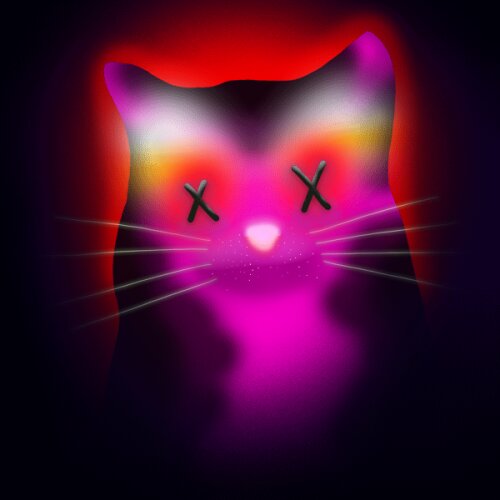
Image: CAT1132 (Quantum Cats) by Taproot Wizards
Abstract
This research is dedicated to exploring possible connections between Creative Writing and the creation of contemporary artworks, considered through the surrealists' attempts to make visible and valorize the unconscious (not reducible to predictable rules) element of the creative process. Over the past four years, I have attempted to transform my own writing through surrealist creation methods. First, I applied surrealist creation methods with children, students, and young people. Then, I explored how contemporary artists still apply these surrealist methods today and reported on this in art and literary magazines. Subsequently, through collaborations and conversations with other authors, theater makers, visual artists, musicians, game developers, and designers, I developed a different way of writing, shaping prose into verses. From this prose in verses, two novels emerged, EU (Track Report, 2021) and 0xBlixa (Das Mag, 2023). Finally, I reflected on my findings in a reflective annex.
Vincent Van Meenen, April 2024
Informed Phrasing - Nadav Katan (24/05/2024)
Nadav Katan
- 24 May 2024 - 10:00, Gele zaal, Royal Conservatoire Antwerp. No reservation needed.
- Supervisors: Bart Eeckhout (University of Antwerp) and Frank Agsteribbe (Royal Conservatoire Antwerp)
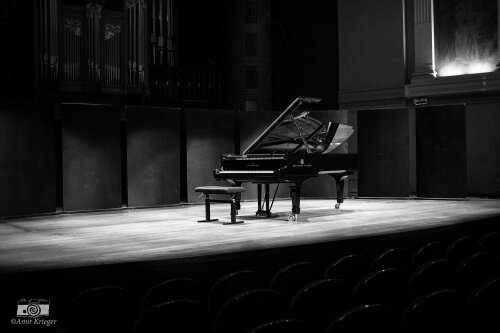
Abstract
'Informed Phrasing' was an artistic research project that delved into the intricate and often contentious relationship between music analysis and performance from an artistic, performative standpoint. With a primary focus on the Phrasing aspect of musical performance, the project explored the points of contact and interactions between Schenkerian analysis, Gestalt psychology, musical performance, and embodied music cognition. Through this exploration, a performative-analytical process emerged, firmly grounded in performance experience, with the aim of stimulating individual creativity and fostering expressivity.
Partisans of the Real - Els Dietvorst (02/05/2024)
Els Dietvorst
- 2 May 2024, 15:00, Royal Academy of Fine Arts Antwerp, De Wintertuin
To attend the defence, please send a message to: els.dietvorst@ap.be. - Supervisors: Pascal Gielen (University of Antwerp) and Johan Pas (Royal Academy of Fine Arts Antwerp)
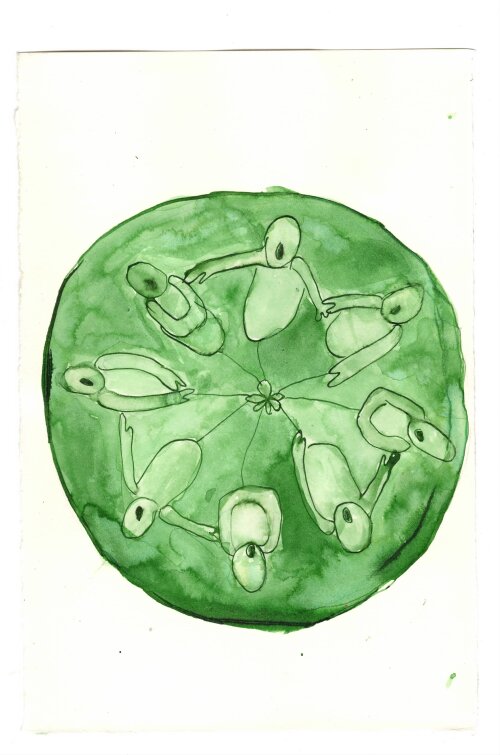
Partisans of the Real
How art can strengthen the individual and play a role in the transition to a socially just, sustainable society
Abstract
“To be a human being among people and to remain one forever, no matter in what circumstances, not to grow despondent and not to lose heart—that’s what life is all about, that's its task.”(Fyodor Dostoevsky)
My work is driven by an ongoing exploration—a quest for beauty, a connection to the collective subconscious, and what I see as the 'missing link' between art and society. I truly believe in the link between art and society. This goes beyond the narrow institutional focus on issues like poverty, exclusion, and marginality, encompassing broader social and human concerns. These include life stories, interpersonal dialogues, migration, cultural diversity, human aspirations, and the broader spectrum of the human condition in the society of today. This also incorporates the impact on human nature of a predominantly capitalist and Western society which leads to major themes such as life and death, anxiety, alienation and desire. I view art as a poetic and vital force that generates diverse dynamics, serving as a social process and a catalyst for uniting individuals from varied backgrounds. My work frequently reveals what often remains invisible, preferring wonder to denunciation.
Experiment & serendipity, primal intuition and dialogue are the foundations of my work. I firmly believe in the role of art as a catalyst serving to bridge social divides and enhance social cohesion. My work has the power to work across diverse communities, artists and non-artists transcending boundaries and barriers. In this sense I perceive art as a collaborative effort—an amalgamation of shared experiences, warmth, and vitality arising from people coming together. It is within this collective engagement that art takes form, evolves, and becomes a dynamic force.
My approach to creation is holistic and inclusive, permeating the world, embracing both the living and the deceased, as well as overlooked objects and people. Working collaboratively allows me to connect with individuals from diverse backgrounds, bridging boundaries of culture and societal norms. All these experiences contribute to my growth as both a human and an artist.
My aim is to stimulate a new ethical consciousness and promote a form of spirituality in which humanity does not dominate society, but rather exists as a small part of the natural world. In this view, individuals have the opportunity to transcend their physical and sensory experiences by living less rationally and more intuitively.
Working holistically and regeneratively, this interaction has led to the emergence of a new form of art. The objective of this emerging art form is to actively participate in the entirety of social reality, transcending boundaries between artists, institutions, urban and rural environments, and public spaces, ultimately fostering empowerment.
(Els Dietvorst, April 2024)
Studies in Art Teachers-Savants - Mirjam van Tilburg (20/02/2024)
Mirjam van Tilburg
- 20 February 2024, 12:00, Buitenplaats Brienenoord, Rotterdam. Please send a message to m.vantilburg@fontys.nl to attend the public defence (mandatory).
- Supervisors: Indra Wolfaert (Royal Academy of Fine Arts Antwerp), Pascal Gielen (University of Antwerp)
- Language: Dutch
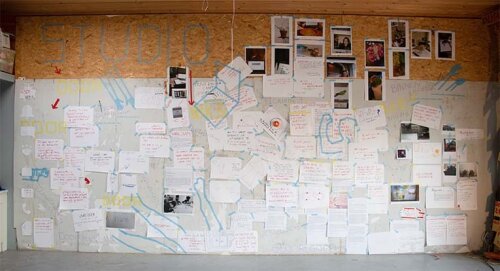
Abstract
In her quest, Mirjam van Tilburg explores the possibilities for the life-long development of art teachers with students aged 12 to 18. One way she did this was through the ‘Studio’ experiment. With ten arts teachers in 2020 and 2021 she explored the shifting dynamics of their profession during de lockdowns. What makes art teaching an artistic connected practice? What is needed in life-long development of art teachers? What image is now dominant in this field? What other possibilities are there? Can life-long development be a practice of commoning?
JAZZ HANDS - Open Hardware Hybrid Saxophone System - Andrew Claes (21/12/2023)
Andrew Claes
- 21 December 2023, Koninklijk Museum voor Schone Kunsten Antwerpen
- 19:00 - 19:45 Presentation by Andrew Claes
- 20:00 - 21:00 Concert by Andrew Claes, featuring Goeyvaerts String Trio + Pieter Leenaerts
- 21:00 - 22:00 PhD defence and reception
- Supervisors: Steven Latré (University of Antwerp) and Kurt Van Herck (Royal Conservatoire Antwerp)
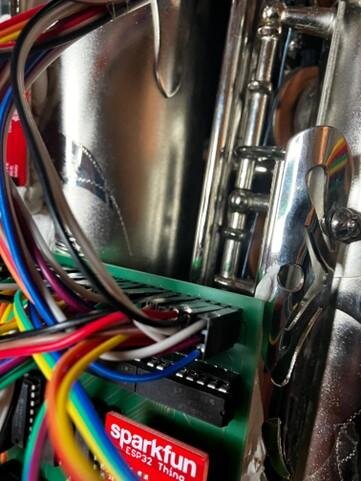
Abstract
This research journey traverses the realms of music, technology, and innovation, culminating in the creation of a groundbreaking hybrid saxophone. The project unfolds as a multidimensional narrative, interweaving technical expertise, artistic exploration, and a quest for the challenging future of musical expression.
The journey begins with the transformation of the student from a musician into an aspiring engineer, fueled by the vision of a new instrument. The core idea combines traditional saxophone craftsmanship with cutting-edge technology, integrating sensors that transmit mechanical movements into the digital domain, elevating the saxophone into a full-fledged MIDI controller without compromising its original acoustic properties.
The research documents the progression of each phase, from self-study in the digital landscape to the development of a functional proof-of-concept model. The prototype is unveiled during a concert with the Goeyvaerts String Trio at the Royal Museum of Fine Arts in Antwerp.
This doctoral research is a pioneering milestone at the intersection of art and technology. It encapsulates the journey from novice to innovator, intertwining knowledge acquisition, prototyping, and artistic expression.
Hearing a Culture: Integrating Sound and Environmental Elements of Braga's Festivities into new compositions - Carlos Brito Dias (14/12/2023)
Carlos Brito Dias
- 14 December 2023, De Singel - Witte zaal
- 19:00 Concert with pieces by Carlos Brito Dias, followed by the PhD defence
- To attend the defence, please send a message to carlos.cbrito.gdias@gmail.com.
- Supervisors: Pascal Gielen (University of Antwerp), Thomas Moore (Royal Conservatoire Antwerp)
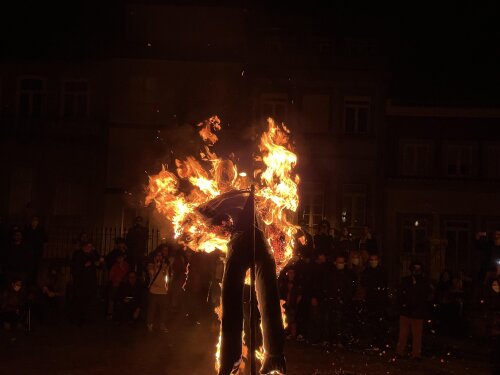
Abstract
This research explores the creation of contemporary musical compositions inspired by traditional soundscapes. Drawing upon personal experiences and hometown traditions, the project delves into ethnomusicologist Veit Erlmann's concept of 'hearing a culture'. The sonic environments of traditional festivals, often dismissed as mere background noise, are carefully captured and analyzed, serving as a rich source of inspiration for new musical pieces. Each celebration that sparked the composer's creative spark possesses a unique auditory landscape, prompting solitary sonic immersions to fully absorb the intricate tapestry of sounds that define these moments. The project reflects on the profound influence of hometown traditions on the composer's journey and their integral role in shaping identity, guided by the concept 'from-roots-to-routes' (S. Hall). This transformative process enabled the development of a distinctive stylistic language that harmoniously echoes the composer's heritage and experiences.
Blurry Scanning - Anton Cotteleer (19/10/2023)
Anton Cotteleer
- 19 October 2023, 14:00 -16:00, DE STUDIO
- 13:30 - doors open - gathering in the 'Salon' (first floor)
- 14:00 - guided tour in the exhibition ‘Out-of-Focus II’
- 14:30 - PhD defence - To attend the PhD defence, please send an email to: anton.cotteleer@ap.be
- Supervisors: Gert Verschraegen (University of Antwerp), Ria De Boodt (Royal Academy of Fine Arts Antwerp)
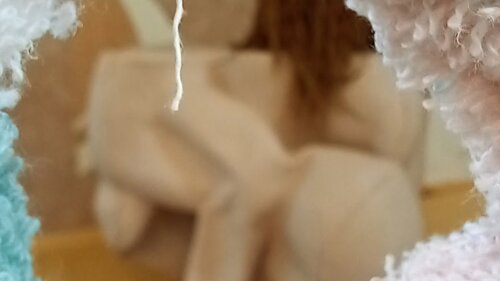
Abstract
The phantom statute of the unsharp, its relationship to our memories, its intimate character and openness for interpretation is what attracts Cotteleer in the blurry. After investigating the meaning of the blurry and the sharp within photography, he looked as a sculptor how the sharp and unsharp relate to sculpture. In this he developed a well-founded personal vision about 'the blurry' or the unsharp. In the project, he analysed how analogue family photos from the 1970s and 1980s, from both personal and anonymous photo albums, could become blurred and how this lack of focus determines our perception of the images. He created new photographs through the act of enlarging and cutting. These new images brought forth mysterious, occasionally broken shapes that were unrelated to the intended subject of the original family photo. They triggered unexpected emotions and memories that paved the way for new interpretations.Based on these new images, he created tactile sculptures and installations that are characterized by blurriness. How do sharpness-unsharpness relate to the memory that takes shape through visual media such as family albums? What is the role of focus and blurring in sculpture versus photography? And what is the impact of this effect on our memories and emotions? How does sharpness-unsharpness relate to the tactile space and how does 'being embodied' in a tactile environment relate to the sculptural? How does this relate to other media? These are just a few research questions he dealt with. By the exhibition ‘Out-of-Focus II’ at DE STUDIO and the publications ‘An Out-of-Focus Scan, part 1’ and ‘An Out-of-Focus Scan, part 2’ Cotteleer gives both visual and theoretical answers to the questions.
Publications
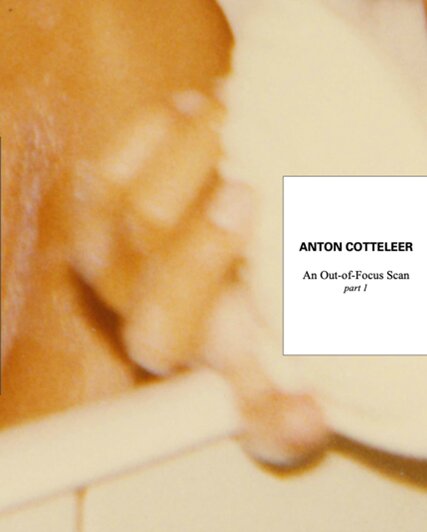
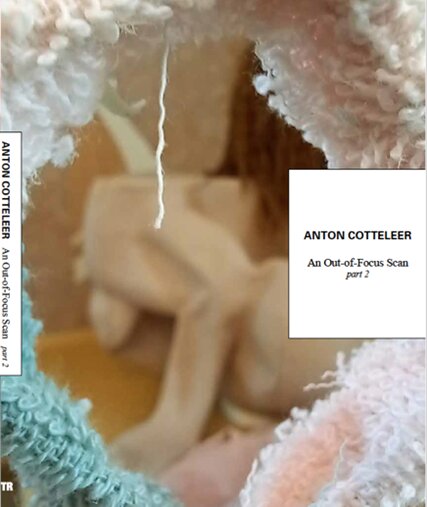
Between Me and You. On the attitude of the audio documentary maker - Katharina Smets (20/05/2023)
Katharina Smets
- 20 May 2023, De Singel - Witte zaal
- 15:00 - lecture performances
- 16:00 - PhD defence - to attend the PhD defence, please send an email to katharina.smets@ap.be.
- Supervisors: Pascal Gielen (University of Antwerp), Luk Van Den Dries (University of Antwerp), Clara Van Den Broek (Royal Conservatoire Antwerp), Martine Huvenne (HoGent).
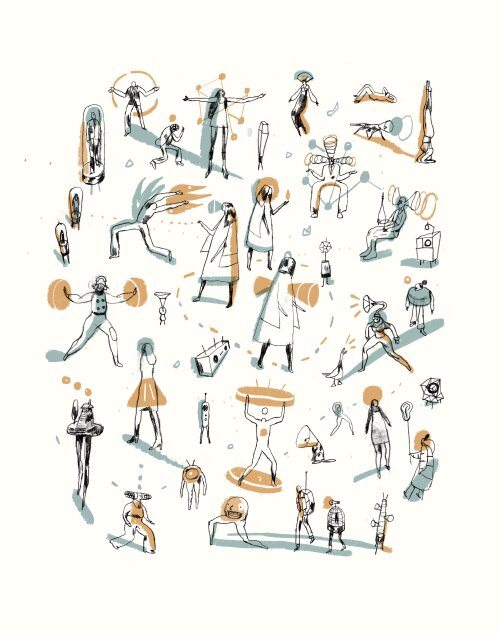
(image by Randall Casaer)
'In the beginning is the relation,' writes the philosopher Martin Buber, ‘as the category of being, as readiness, as a form that reaches out to be filled, as a model of the soul.’ In this essay I have brought together my own small collective of like-minded people, and through it I have learnt a great deal that has helped me to shift from a focus on the 'I' to an openness towards the 'You'. I experimented with different approaches in my work. Kaitlin Prest told me of her conviction for sharing the realities of her intimate life with her listeners. Jonathan Goldstein bases his first-person narrator on a literary tradition free of journalistic intent, and listening to his work has taught me to establish a conclusive persona for my narrator, as well as how to use literary devices when writing for that voice. Rikke Houd, the master of metaphor, has showed me how using more imagery can sometimes bring me closer to the truth, while Maartje Duin showed me that journalism is not the same as feigned objectivity. Ethical journalism can go some way to saving us from an egocentric focus on ourselves. It brought me to the notion of what real listening actually is, and what its consequences might be. I returned to Eleanor McDowall and Alan Hall, proponents of not featuring as a protagonist in the work they create, a choice which retains the power to show a particular reality. However, that dynamic is also reciprocal, and as a maker, I have a certain responsibility. I can create an idiosyncratic form to elicit a direct experience, and I have the power to document real encounters with the people I interview, as well as a continued dialogue with my audience. In this search for 'I' and 'You', I have found my own attitude in my work; an empathetic exchange with the other to enrich my view of the world. Real encounters cannot be fully directed. That, of course, makes the final work documentary, not fiction, as I do not just move but am moved also; I must be willing to let the encounter change me. Only in editing can I give direction to the recorded tape and blend factual reality with emotional reality to create a documentary. Martin Buber writes: ‘Such work is creation, inventing is finding. Forming is discovery. As I actualize, I uncover.’
De la modélisation à la notation - Composer le geste avec les nouvelles technologies dans les œuvres musicales transdisciplinaires - Alireza Farhang (21/01/2023)
Alireza Farhang
- 21 January 2023, Université Côte d'Azur, Nice
- Language of the defence: French
- Supervisors: Jean-François Trubert and François Paris (Université Côte d'Azur), Kurt Vanhoutte (University of Antwerp), Frank Agsteribbe (Royal Conservatoire Antwerp)
Abstract
When the gesture becomes the driving force of a musical piece, the composer deals with musical ideas that go beyond the framework of a conventional musical parameters of pitch- duration-intensity. Therefore, she/he must build a new strategy to be able to notate features that better represent her/his ideas. This becomes more important when it comes to transdisciplinary works, where the erosion of boundaries between the arts, and the fusion of different artistic forms give rise to a multidimensional artistic discourse that cannot be represented only by conventional notation. In the 1950’s, American composers like John Cage on the one hand, and European composers like Dieter Schnebel on the other hand, invented graphic signs to represent their musical language. The scores of Mauricio Kagel feature the scenic space and the presence of the body of the musician at the same level, to the point that they come into tension with the musical content. If the graphic representation of music as a performance medium can be considered as an aid to performers, then what happens when notation becomes the active agent in the process of composing a work? This thesis develops the artistic research carried out through the composition of three works, including a musical theatre piece, by situating them in a landscape where other systems of aesthetic and technical thoughts coexist. After a discussion about artistic research and the role of new technologies in musical creation, as well as its ethical, social and political aspects, I will explain the artistic context in which the sound gesture becomes the central element of the musical discourse in my works. The first part of this doctorate is the composition of a vocal piece whose composition process is focused on the notation of the speech gesture as a composition tool. Subsequently, the research that I carry out on this occasion is used for the composition of the musical theatre piece where the vocal gesture and the sound gesture join physical gestures. The creation of a hybrid score remains at the heart of this second part of the thesis. The hybrid score includes extra-musical elements, including text and dramaturgy; the graphic representation of gestures; the technical aspect (electronics); and of course the music. As for the third and last part, it is a concerto for flute and orchestra where the sound mass becomes a vector for the gestural profiles of the solo instrument.
Pharmakos. Adornment as a social tool - Vivi Touloumidi (8/12/2022)
Vivi Touloumidi
- 8 December 2022, auditorium M HKA
- 16:30 - PhD defence - to attend the PhD defence, please send an email to info@vivitouloumidi.com
- 18:30 - reception
- 19:00 - opening exhibition 'Pharmakos. Adornment as a social tool'INBOX at M HKA
- Supervisors: Roel Arkesteijn (Royal Academy of Fine Arts Antwerp), Pascal Gielen (University of Antwerp)
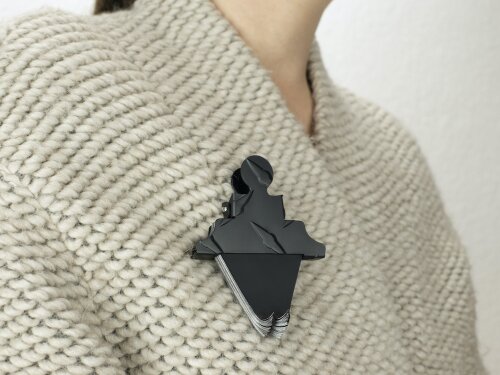
Abstract
In ancient Greece, “Pharmakon”, was a chosen individual, who was selected through common consensus by its community. The person was either sacrificed as a means of purification for the city, or it was ostracized away from the region. Its exile was perceived as a societal catharsis. It relates to the historical ritual of the ‘scapegoat’, which has come to mean any group or individual that innocently bears the blame for others in times of social conflict and crisis. The term derives from the Greek φάρμακον (pharmakon), which can act both as the remedy and the poison.
The PhD research and accompanying exhibition, 'Pharmakos', at M HKA museum (9.12.22-8.1.23) investigate this societal phenomenon through the lenses of adornment. The starting point is the archival research conducted by the artist, mostly at the Bundesarchiv in Berlin. She looked at WWII administration letters, where Nazi bureaucrats discussed the development of wearable signs used on human bodies in order to systematize their (id)entities in forced-labor camps. The display on these badges conditioned diverse bodies according to the value system and hierarchical logic of the regime and its allies. The color-coded signs determined the unwelcome in society. Or even distinguished the welcome.
While acknowledging similar locations of thought emerging globally today that attack self-determination, once again, Vivi Touloumidi investigates adornment as an active agent to address social discomfort, repression, and marginalization in the public realm. Her work appropriates signs of stigmatization employed during WWII and proposes wearable pieces that speak of resilience to support a practice of creative resistance. These statement-pieces are made for the emancipation of the female body and the social body. Adornment is seen as an instrument of empowerment, articulating processes of becoming and existing otherwise.
Bodies of knowledge - How to claim public space as a platform for the exchange of non-dominant or suppressed knowledge - Sarah Vanhee (24/09/2022)
Sarah Vanhee
- 24 September 2022, De Singel - Witte zaal, Antwerp
- 15:00 Artistic intervention: BOK session with Flore Herman and Sarah Vanhee
BOK (bodies of knowledge) is a place where people can learn from each other. Things one usually does not learn, told by voices that are not always heard, from different parts of society and the world. In BOK we exchange knowledge that feeds a more just and humane society. It is a space to listen, to ask, to connect. BOK welcomes life experts rather than professional authorities. As a semi-nomadic classroom, BOK stays in the same spot in the city for a few weeks or months, and then moves on again.
Usually, BOK is to be found in public squares. Exceptionally, a fictional version of the nomadic classroom will be evoked in the conservatoire of Antwerp. Flore Herman, member of the BOK team, will invite Sarah Vanhee to share her knowledge on “Claiming space for the exchange of non-dominant knowledge (in a tent)”.
This listening session follows the regular BOK protocol. Everyone is welcome and there’s room for questions in the end. - 16:30 PhD Defense
- 15:00 Artistic intervention: BOK session with Flore Herman and Sarah Vanhee
- Supervisors: Willem de Wolf (Royal Conservatoire Antwerp), Pascal Gielen (University of Antwerp)
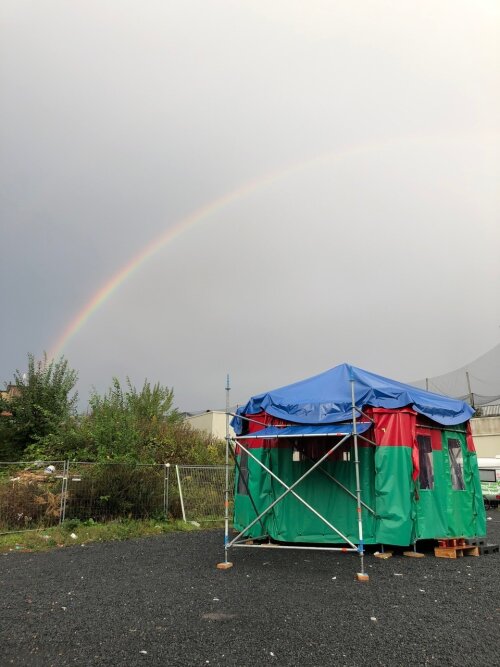
Abstract
This artistic doctoral project- ‘bodies of knowledge- how to claim public space as a platform for the exchange of non-dominant or suppressed knowledge’(2018-2022) - includes the research on embodied knowledge by non-dominant voices, as well as the performative action of claiming public space for the exchange of that knowledge. Initial research questions were: How can public space be activated, via artistic intervention, for the transmission of non-dominant knowledge? How to create a ‘safe space’ within public space for the exchange of different forms of suppressed knowledge, between diverse members of civil society? What are artistic and political strategies to reverse existing knowledge/power relations within the public domain? Which forms of performative knowledge transmission can contribute to a more just, equal, emancipated civil society?
The artist understands education as art and knowledge transmission as a performative act. Drawing upon methodologies developed in previous works, she formalizes and ritualizes a place for oral knowledge exchange, together with different collaborators and co-creators, within different frames and formats.
Composing with Piezo - Daniela Fantechi (1/07/2022)
Daniela Fantechi
- 1 July 2022, Orpheus Institute, Gent
- 14:00 Artistic presentation
- 15:00 PhD Defence
- Supervisors: Wim Henderickx (Royal Conservatoire Antwerp), Erik Myin (University of Antwerp)
Abstract
The thesis Composing with piezo concerns Daniela Fantechi's research project about the composition of instrumental music implemented with a specific use of piezoelectric microphones - low cost and low fidelity contact microphones. During her research, Daniela explored a peculiar use of this technology not only to disclose and amplify the instrumental sound but also to produce unusual sounds, through a reinterpretation of some instrumental gestures, such as glissando, tapping, scraping, etc, produced by playing with the microphone directly on the instrument. The introduction of piezoelectric microphones in her compositional work changed the relationships with the instrumental sound matter, bringing to question different aspects of the compositional approach. The whole research process has consequently been supported by the search for frameworks, theories, and examples, to understand and bring focus to the evolving compositional practice.
The thesis starts by investigating the history of the contact microphone and the way it has become a cultural object, considering diverse artistic experiences in the time window from the '60s to the '80s, when contact microphones began to be a widespread technology. From then on, the use of contact microphones has become common in a huge and diverse range of artistic experiences, most of them related to sound art and experimental music. The second chapter addresses what kind of changes and interferences the introduction of piezoelectric microphones brings into the instrumental sound system, by observing the kind of impact the use of piezoelectric microphones on acoustic instruments has on the listening experience, here defined as a "stethoscopic form of listening". The role of the piezo within the instrumental system is then addressed from an ecological perspective, taking into account the complexity of the feedback network between the instrument and the performer, the alteration of the usual perceptual habits, and the possibility of building new instrumental systems. The third chapter highlights some relevant concepts that have emerged from the practice and have become operational within the development of the research. The fourth chapter is dedicated to the main artistic outputs of the research. For each work, the technical setup, the context for which the piece has been written, and the compositional practice are explained.
The Artist Job Description, a Practice Led Research for the Employment of the Artist, as an Artist, Inside the Art Institution - Vijai Maia Patchineelam (08/06/2022)
Vijai Maia Patchineelam
- 8 June 2022, 13:00, Royal Academy of Fine Arts Antwerp, Winter Garden. The defence can be attended live or followed via livestream.
- Supervisors: Nico Dockx (Royal Academy of Fine Arts Antwerp), Paolo S.H. Favero (University of Antwerp)
Abstract
The artist’s experience of being inside art institutions, starting from the effort made to be accepted in order to develop one’s art practice, then the experience of going through them, and while in them, the many ways of having to learn how to be inside. This will in several ways inform the development of an artist’s practice, for the good or for the bad. Developing the doctoral research, The Artist Job Description has been an attempt at recognizing and dealing with, rather than avoiding, the tensions that exist in the relationship between artists and art institutions at a time when most art institutions themselves are under the pressure of austerity-politics.
The Creative Performer and Giacinto Scelsi: Building a Creative Performance Practice in Dialogue with Giacinto Scelsi’s Artefacts - Marco Fusi (13/05/2022)
Marco Fusi
- 13 May 2022, De Singel Antwerp, Witte Zaal. To attend the defence, please send an email to marco.fusi@ap.be
- 14:00 - 14:30 ARTISTIC PRESENTATION - Marco Fusi performing Xnoybis, Divertimento n.4 and Cadenza by Giacinto Scelsi
- 14:30 - 16:30 PhD defence
- 14:00 - 14:30 ARTISTIC PRESENTATION - Marco Fusi performing Xnoybis, Divertimento n.4 and Cadenza by Giacinto Scelsi
- Supervisors: Ine Vanoeveren (Royal Conservatoire Antwerp), Marlies De Munck, Arthur Cools (University of Antwerp)
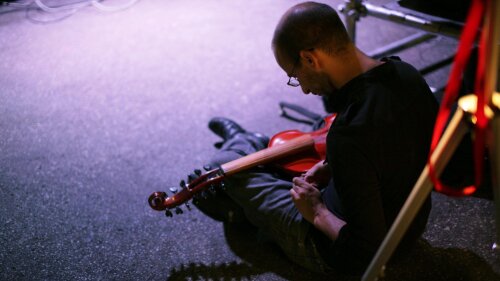
Abstract
Direct contact with Giacinto Scelsi has been the only acknowledged approach to the interpretation of his music, hence forming a circle of elite-performers, recipients of an understanding “beyond the written score”. However, in order to preserve the accuracy and faithfulness of performance, it is essential today to investigate the complex creative process of Scelsi, looking for interpretative suggestions residing within his artefacts. This research has led to discovering the importance of the performer’s creative participation in the process of conceiving, notating and delivering Scelsi’s creative output. To approach the performance of Scelsi’s opus the creative performer needs to devise performative approaches specific to each work, based on their individual experience and personal creative interaction with the materials of performance.
(Photo by Veera Vehkasalo)
Sonic Silhouettes Musical Movement - Investigating the Musical-Gestural Perspective - Winnie Huang (04/04/2022)
Winnie Huang
- 4 April 2022, De Singel Antwerp, Gele zaal. To attend the defence, send an e-mail to winnie.huang@ap.be
- 10:30 - 11:30 Concert performance
- 11:40 - 12:20 Lecture presentation
- 12:30 - 13:30 PhD defence
- Supervisors: Ine Vanoeveren (Royal Conservatoire Antwerp) en Peter Reynaert (University of Antwerp)
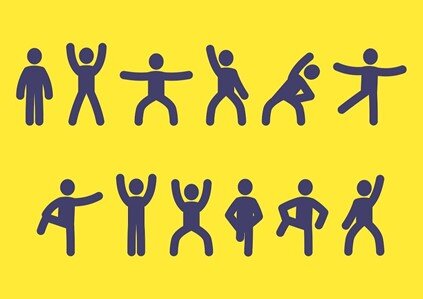
Abstract
In the contemporary music world of the performing arts, an increasing number of musical-gestural works are being composed and performed. The rise of these pieces, the curiosity in creating them by composers, and the growing demand for these types of performers necessitate investigation from an artistic researcher’s perspective, in the hope of providing insight and agency for future creators, artists, and academics in this field. Through a methodical investigation on various case studies, different in the degree of composer/performer collaboration, Sonic Silhouettes Musical Movement questions the identity and role of the musical-gestural artistic researcher at all the varying degrees of participation during the process of collaboration, composition and performance.
This research aims to examine how musical-gestural pieces are learned and performed through an exploration on the various skill sets, performance practice methods, notational issues, and the physical states a performer adopts, and effectively provide additional knowledge towards an evolving group of artists and the spectrum of creatives around and within.
Finally, this research hopes to explore how the performer inhabits the artistic body in the creation/composition process and during the performance, the presentness; understanding the artistic body’s physical presence, self-awareness, and sensorial interactions while in rehearsal/performance, since dramatic movements seemingly provide some of the strongest contributors for human expression, intention, and focus. Through proactive embodied research, the emergence of new pathways, and the collaborative and transmissive experiences, this critical reflection showcases the expanding nature and collective knowledge gained from the musical-gestural perspective for all participants.
The Bureaucreative Age - A parafiction on the aftermath of the creative industries - Sarah Hendrickx (18/03/2022)
Sarah Hendrickx
- 18 March 2022 - M HKA - Please confirm your presence at sarah.hendrickx@kdg.be
- 13.30 - 14:30 Screening documentary meandmywork and the (Bureau)Creative Age - Auditorium, 3rd floor
- 14:30 - 15:00 Visit exhibition, 5th floor
- 15:00 - 17:00 PhD defence - Auditorium, 3rd floor
- Language: Dutch
- Supervisors: Wesley Meuris (Sint Lucas Antwerpen), Pascal Gielen (University of Antwerpen)
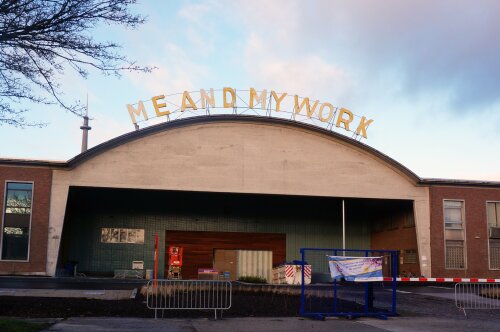
Abstract
The parafictional documentary meandmywork and the (Bureau)Creative Age and the accompanying exhibition at the M HKA in Antwerp (24/02/2022 – 20/03/2022) are the final result of visual artist Sarah Hendrickx’s Phd research in the Arts at St Lucas Antwerp and the University of Antwerp.
The Bureaucreative Age is a research that finds itself tangled within a corporate, economic and bureaucratic environment and is explored inside an artistic parafiction. The artist plays with an overlap between fact and fiction through the imagination of the Research Centre on Creative Abilities meandmywork.
The story in which meandmywork is ultimately set up as a fictitious character, over-identifies itself with the bureaucratic and corporate processes experienced in the business field of creativity incorporated. In order to leave the door open for speculation, the research is an artistic act of futuring: a process to think about the future, envision what may happen, and to gain insight into actions to take in the present.
Several different layers were constructed meticulously to work on the truthiness of the story while at the same time adjusting sentences, words, visuals, ways of editing, etc. that hint the fabrication of the whole fiction. Real interviews bring about other reflections and opinions and strengthen the documentary’s credibility.
Another part of the research enters the stage by means of an exhibition showcasing so called artefacts dating from TheBureaucreative Age and the journey of the Research Centre meandmywork, encouraging the viewer to step further inside its fiction.
The parafiction of The Bureaucreative Age and the Research Centre on Creative Abilities meandmywork as its lead role, produce their meaning in the encounter with the spectator, creating a specific multiplicity while introducing a fatalistic version of what might happen when art and creativity get absorbed by corporate dominion.
MoE 2.0 - from dramatic-inquiry towards an artistic result in art education - Bob Selderslaghs (04/03/2022)
Bob Selderslaghs
- 4 March 2022 - De Singel Antwerp
- 15:00 - 15:30 - De Experten IV - Presentation moment - Muziekstudio - TICKETS
- 15:30 - Exhibition - hall Witte Zaal and Witte Foyer
- 16:30 - 18:30 - PhD Defence - To attend the defence, please send an e-mail to bob.selderslaghs@ap.be.
Language: Dutch
- Supervisors: Annouk Van Moorsel (Royal Conservatoire Antwerp) and Kurt Vanhoutte (University of Antwerp)
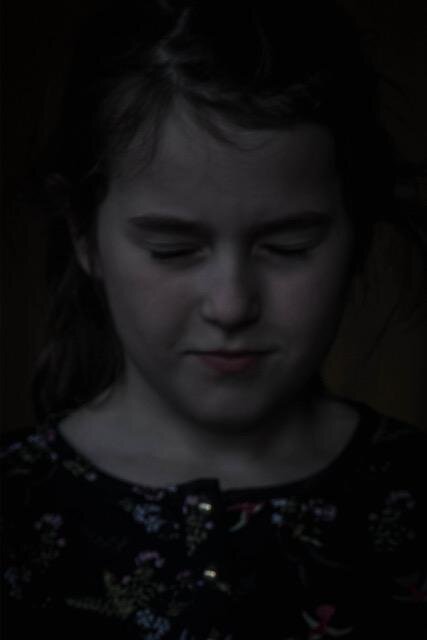
photo by Barbara Vandendriessche
Abstract
Little research has been done on how to create a healthy balance between process and product in arts education. Yet researchers, artists, teachers, teaching artists, teacher trainers, students and audiences alike recognise the need for such a balance: without a high-quality process, it is impossible to achieve a high-quality product. And a product of a poor or dubious standard will, at best, be overlooked by spectators if they have an emotional connection to the artist(s) or if they know that a valuable (social) process did precede the product. The MoE 2.0 doctoral research project explores how the dramatic-inquiry approach to learning and teaching Mantle of the Expert, a form of process drama, can be enriched into a methodology in arts education for creating non-scripted theatre performances with young audiences and thus create a harmony between the artistic process and product.
Redefining the Conductor’s Role in New Music Ensembles - Thomas R. Moore (19/02/2022)
Thomas R. Moore
- 19 February 2022 - De Singel Antwerp
- 10:00 - 13:00 PhD defence - Witte zaal - to attend the defence, send an email to thomas.moore@ap.be.
- 21:00 - 22:00 Concert 'Hand On (Hands Off)' - Musical performance by Nadar Ensemble, conducted by Thomas R. Moore - Blauwe zaal - TICKETS
- Supervisors: Koen Kessels (Royal Conservatoire Antwerp) and Pascal Gielen (University of Antwerp)
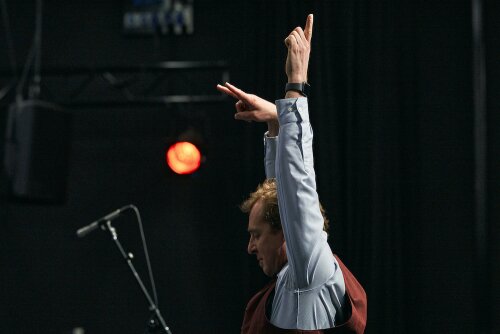
Abstract
Over the last seven decades, the role of the conductor has evolved in new music ensembles that perform integrated concerts. It was problematized by John Cage; doubled (or split) by Charles Ives, Karlheinz Stockhausen, and Mark Applebaum; manipulated by Thierry De Mey, Simon Steen-Andersen, and Stefan Prins; instrumentalized by Alexander Schubert, Alexander Khubeev, Michael Maierhof, and Pieter Matthynssens; and deployed tactically by Serge Verstockt, Jessie Marino, and Carl Rosman. For these composers and artistic directors and others in their genre, the presence of the conductor is no secondary phenomenon of the music, by an affirmative and active choice to deploy one to meet specific artistic and/or socioeconomic needs. The systematic study of this relatively new and developing situation allowed me to find tools and methods for forming the required piece-specific performance practices with the aim of better functioning as a tactical and curated conductor.
→ Link to Thomas R. Moore's PhD thesis
Close Encounters. Developing a Method for the Creation of Dialogue through Photography - Liza Van der Stock (28/09/2021)
PhD defence Liza Van der Stock
- 28 September 2021, 11u - online defence - send a message to liza.vanderstock@student.uantwerpen.be if you want to attend the defence.
- Supervisors: Paolo S.H. Favero (University of Antwerp) and Kristof Timmerman (Royal Academy of Fine Arts Antwerp)
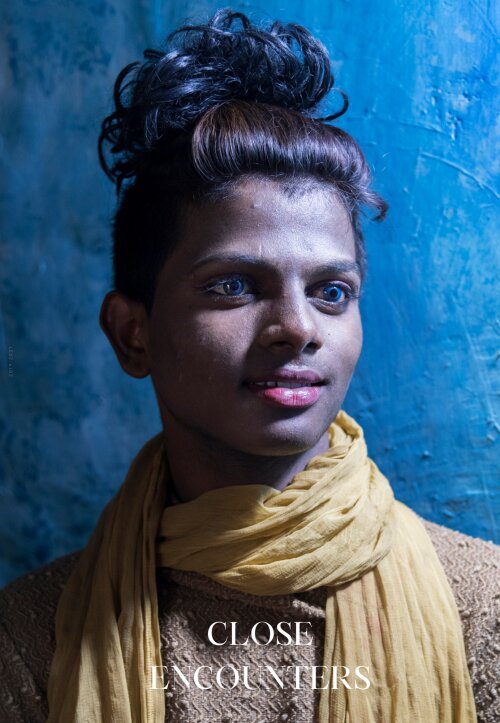
Abstract
My PhD in the Arts focuses on the multiple ways in which photography, as a visual form and a communication practice, can help crossing bridges, creating dialogue across communities and individuals that are conventionally kept apart from each other.
I spent most of my PhD duration with members of transgender communities in Mumbai: the so-called "hijras", an often derogatory Hindi term used to depict eunuchs, intersex, and transgender people. In India, Hijras are simultaneously objects of reverence and disgust, attraction and repulsion.
The photographic work on which my PhD builds is a combination of documentary techniques and creative participatory practices. Its core ambition - which is also at the centre of the final (at the moment virtual) exhibition - is to offer unique insights into the lives of transgender women who are often the object of mediatic attention but seldom the protagonists of intimate exchanges and reciprocal dialogues. The photographic material that makes up the core of my work offers both playful and staged performances enacted for the camera and glimpses into banal moments of everyday life among individuals who occupy an ambiguous place in their society.
The creative participatory practices were a combination of workshops and exhibitions. The workshops aimed to translate the techniques I used to create rapport with the people I photographed into collaborative workshops between students and transgender women from the same community, people living in close proximity to each other but without any rapport. To this aim, workshop participants discussed and decorated the photographs. The prints they worked with showed the transgender women in daily situations with friends and family, celebrating festivals or going out. By inviting the participant to engage with the materials creatively, the focus shifted instantly to situations and experiences they had in common. Everyone shared experiences, and inspiring discussions arose.
The most valuable insight from my PhD is the appreciation of photography's power to bring people together and inspire dialogue. Over the past three years, I witnessed this firsthand, and I am committed to using photography precisely for that in the future.
Per Forza di Levare - Athar Jaber (29/06/2021)
Athar Jaber
- 29 June 2021 - online defence - send a message to research@atharjaber.com if you want to attend the defence.
- Supervisors: Gert Verschraegen (University of Antwerp) and Ria De Boodt (Royal Academy of Fine Arts Antwerp)
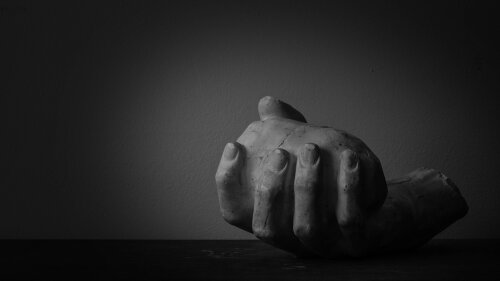
Abstract
The practice of sculpture, and of stone carving in specific, is related to violence on many levels. First, there is the evident, all to visible violence of the carving act. Secondly, sculptures and monuments play a representative role in service of authorities that govern through policies of systemic violence. And thirdly, stone, the very material with which many sculptures are made of, carries a symbolic value that can be associated to oppressive strategies of structural violence.
In this practice-based PhD research in the Arts, Athar Jaber fuses critical thinking on the topic of violence with his sculptural practice. He elaborates on above mentioned aspects with the intention to address pressing socio-political issues that afflict our contemporary society and the human condition in general.
Furthermore, the research intends to bring attention to the latent semiotic potentiality of stone to stimulate a more conscious use of it in contemporary art practices.
Endlich etwas wirklich neues - Levente Kende (13/06/2021)
Levente Kende
- 13 June 2021 - De Singel Antwerp - Blauwe zaal - registration required
- 15:30 - 18:00 Liszt - Bartók concert
- 18:00 - 19:30 PhD defence
- Supervisors: Stephan Weytjens (Royal Conservatoire Antwerp) and Henk de Smaele (University of Antwerp)
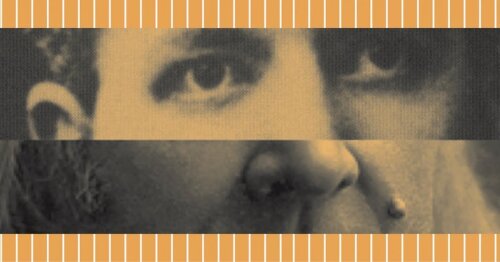
Abstract
Endlich etwas wirklich neues… (Ferruccio Busoni about Béla Bartók’s 14 Bagatellen / 1908) versus Darf man solch ein Ding schreiben oder anhören? (Ferenc Liszt about his Csárdás macabre / 1882)
Comparative research of (r)evolutionary innovations in the late piano works (1860-1886) by Ferenc Liszt and the early piano works (1908-1912) of Béla Bartók by Levente Kende
Although Liszt composed 'provocative' programme music with modernist elements from the very beginning - such as Les Morts, Harmonies poétiques et religieuses, Sonata, Faust-Symphonie - it is particularly remarkable that after 1860, he suddenly composed piano pieces - such as Trois Odes funèbres: Les Morts - La Notte - Le triomphe funèbre de Tasso, Années de Pèlerinage III., Nuages gris, Mosonyi's Grabgeleit - composes pieces that completely and remarkably deviate from his usual composition style. These works show a stylistic mixture of late-Romantic, impressionistic and expressionistic elements. Around 1860, an era began in which 'death and dance' was a regularly recurring theme in Liszt's works: his death poetry written in 'a compositional fever'. These late pieces (1860-1886) are expressionist, partly a-tonal, and were only played by Liszt and his pupils. The climax came in 1881-1882 with 'Csárdás macabre', the most remarkable of the very daring series of compositions, in which he increasingly threw himself into chromatic dissonances; a piece with protracted, droning and frightening empty fifths, chromatically moving between 'possible and impossible keys'. Liszt used a laconic question as a subtitle: "Darf man solch ein Ding schreiben oder hören?".
As a stylistic predecessor of Bartók and 20th-century music, Liszt's Csárdás macabre is a fully-fledged composition that evolves from late-Romanticism to a polytonal pre-expressionism and opens a path to the atonal expressionism of Bartók's 14 Bagatelles. - In Liszt's oeuvre, and in the general stylistic evolution of the 19th century, this masterpiece for piano shows just as groundbreaking inventiveness as 26 years later Bartók's 14 Bagatelles. Between 1908-1912 Bartók composed an impressive series of piano works including the 14 Bagatelles and Allegro barbaro. With the 14 Bagatelles, a new era and a new "modern" style has dawned for the piano. - About this is the famous statement of Busoni: "Endlich etwas wirklich neues". Bartók wrote "The Bagatelles open up a new keyboard style in my career as a composer which most of my later piano works - with smaller or larger adaptations - consistently follow". During this study is also examined to what extent Liszt's late works not only form a (r)evolutionary break with high Romanticism, but are also an avant-garde basis for Bartók's style and compositional technique, and by extension for 20th century composers such as Debussy, Reger, Busoni, Schoenberg, Prokofiev, Rachmaninov, Messiaen, Kurtág and others, through which the expansion of tonal-functional music and also new musical forms could arise. The focus is on the Liszt-Bartók equation: what in the end led both composers in a similar way to realize this break with early modernity from their both late-Romantic, eclectic idiom.
A deeper investigation analyses which leading passions and mental factors inspired Liszt in 1860 and Bartók in 1908 and how this is reflected in their respective compositions. This research tries to find an answer to the question why Liszt from 1860 onwards and Bartók from 1908 onwards essentially deviate from their composing techniques used for this purpose and realize an "avant-garde" (r)evolution in Europe and in Hungarian music both in the stylistic and compositional field. Essential quotations are mainly from Liszt's and Bartók's personal letters in a diary-like chronological form. But also from authentic and historical documents, first editions, press comments in historical journals. This makes it clearer how special living conditions and essential events have influenced both their thoughts and emotional world and therefore their musical stylistic evolution, their compositional techniques. In this way, Liszt's late and Bartók's early compositions are situated, correctly dated, inspiration models investigated, placed in historical context with the ultimate aim of answering the question "which late Liszt compositions were known to Bartók and have (substantially) influenced him".
Bartók's collaboration with Breitkopf & Härtel (1911-1913) for the publication of Liszt Complete Werken - Bartók's introduction to Liszt's Hungarian related compositions - is discussed in detail. Special attention is paid to Bartók's revision of Liszt's Csárdás macabre. The guesses concerning the right date of composing Bartók's most iconic work, Allegro barbaro, are now better situated so that this work now gets a correct re-dating. This is based on an extremely complete chronology of his work in 1910-19013. It is also highly probable that Liszt's Csárdás macabre was the model for Bartók's Allegro Barbaro.
Freedom Is Not Free - Mashid Mohadjerin (20/05/2021)
Mashid Mohadjerin
- 20 May 2021 - 15:00: public defence online. Send a message to mashid.fotografia@gmail.com if you want to attend.
- Supervisors: Roschanack Shaery-Yazdi (UAntwerp), Johan Pas (Royal Academy of Fine Arts Antwerp)
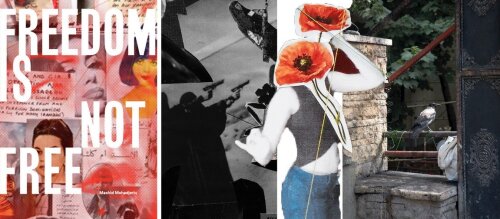
Abstract
Across the Middle East and the rest of the world, historically and today, women have been essential to achieving political change. Without their participation, many revolutions would have failed. My PhD project revolves around the importance of women and the photographic representation and challenges thereof within the uprisings in the Middle East and North Africa. It culminates in a personal journey to my native Iran in search of my roots and my own story of a revolution.
Inspired by the Arab Uprisings and the overwhelming presence of women within the protests, this research project investigates the influence of representation and photographic images within the context of revolutions and the way it is used on both sides of the political spectrum. I question existing (mis)representations of Muslim, Arab and Middle Eastern women and my aim is to create an alternative representation based on their and my own internal gaze.
Aware of the existing conventions within my practice, which is documentary and portraiture photography, I attempt to depict the struggle and environment of iconic female figures through a multidimensional approach in which I base my image making on intimate conversations.
Through archival images and texts, a historical dimension is added in the form of collages. The conversations with activists and critical reflections influence my selection and sequencing process and help me paint a more complex and nuanced narrative. The final result is a personal kaleidoscopic account of women and resistance in the Middle East, North Africa and Iran that interweaves the journalistic and the artistic.
Exit Strategies and a Stand Alone Complex - Peter Lemmens (28/04/2021)
Peter Lemmens
- 28 April 2021
- 14:00: screening of the film 'Reverse Engineering'. Live stream via https://youtu.be/uMoVDjBasns
- 16:00: public defence online. Send a message to peterlemmenspeter@gmail.com if you want to attend.
- Supervisor: Pascal Gielen (UAntwerp), Johan Pas (Royal Academy of Fine Arts Antwerp)
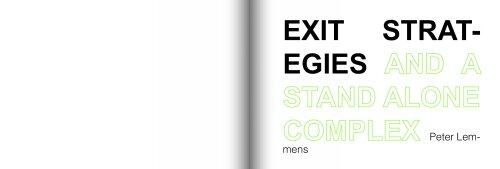
Abstract
This research aims to include a set of intangible aspects of artistic production and distribution and deploy these as critical and aesthetic moments. Borrowing from Fan Fiction, as a divergent field that relies on self-organization, I wanted to look at an artwork’s operational levels for its social, economical, political and artistic capacity. On this intersection, I question how to organize oneself as an artist as I look for unsound methods and indirect approaches. To be indirectly involved as in Fan Fiction, to be engaged alongside something else is an entry point disguised as an exit. My artworks are demarcations not only of what needs to be done differently, but also of what can be done simultaneously. In this way, I like to step away from binary thinking into the ambiguous, the superimposed and the paradoxical. I adopt a strategy of simultaneity that looks for small diversionary tactics as a permanent, fragile mode of production and distribution. The research looks for its necessity, not in depicting models for linear problem-solving within a work, but in creating interfering moments of paradoxical thinking beyond the work. In this way, I look at how to create slow, indirect narratives of involvement. Through the lens of distribution I expand the question of “what is produced” with “how it’s produced”.
The digital publication 'exit strategies and a stand alone complex’ can be downloaded at http://diversions.be/downloads/book.html.
Parallel narratives, different elements and forms of representations and their influence on the audiences’ perception (19/02/2021)
Ali Moayed Baharlou
- 19 February 2021 - 17:00 p.m.
- Online defence: please register before 18 February via Ali.MoayedBaharlou@student.uantwerpen.be
- Supervisors: Dr. Philippe Meers (UAntwerp), Dr. Tom De Smedt (Sint Lucas Antwerp)
Abstract
Parallel narratives, different elements and forms of representations and their influence on the audiences’ perception researches parallel narratives in film and how choice can lead to different destinies for the protagonist. The questions raised are how the audiences perceive these topics in parallel narratives and how filmmakers can change or manipulate the perception of choices, multiple paths and free will by diverse narrative elements, devices and different forms of representations.
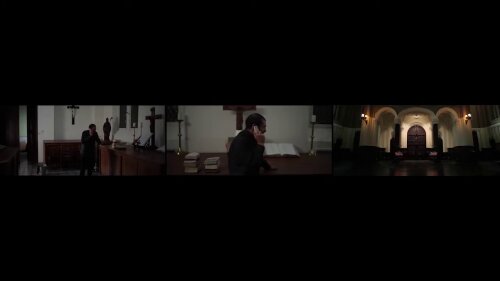
A Case of Recorders: Recorder Use in Spanish Churches and Cathedrals in the Sixteenth and Early Seventeenth Centuries - Julia Miller (14/10/2020)
Julia Miller
- 14 October 2020
- Supervisors: dr. Bruno Blondé (UAntwerp), dr. Eugeen Schreurs (Royal Conservatoire Antwerp) and dr. David Burn (KU Leuven)
Abstract
This PhD project researches the use of recorders in performing sacred music in Spanish cathedrals and churches during the sixteenth and early seventeenth centuries. As well, it examines the interaction of the historical findings with artistic questions arising in twenty-first-century performance of this sacred music repertoire.
When today's musicians seek to perform sacred Renaissance works in an historically informed manner, they are confronted with an array of questions arising from original music sources which did not generally specify the use of instruments or the manner of arranging the music for performance. Paradoxically, while numerous sets of recorders were purchased by ecclesiastic institutions during the period studied, most contemporary sacred music did not specifically call for their use. As well, surviving sixteenth- and early seventeenth-century documentation is highly fragmentary regarding the participatory role of recorders in sacred repertoire of this period.
At the same time, scholarly research and writing had not addressed this issue. Sacred music of this era offers the modern musician a large and rich potential repertoire of supreme quality and beauty. Therefore, in seeking an historically informed basis for performance, this doctoral project asks if recorders were used in such works in Spanish ecclesiastic institutions during the sixteenth and early seventeenth centuries, and, if so, how.
World Without Us - Geert Goiris (09/05/2019)
Geert Goiris
- 9 May 2019
- Supervisors: Luc Pauwels and Johan Pas
Abstract
World Without Us is a practice based Phd in visual art.
Rather than stemming from a defined hypothesis or research question, it should be understood as a visualization experiment anticipating a world without humans.
These excercises in imagination take shape in three interconnected presentations: two consecutive exhibitions and a publication.
The exhibitions wants to pronounce the perceptional shift caused by current anxieties about the future of our planet.
Fundamental changes in our ecosystem and the rise of artificial intelligences are modifying the world as we know it. The future of humankind will be a very different one. How does this affect our psychological state of mind, our imagined futures and premonitions? In this ‘age of uncertainty’ the individual is overpowered by alarmist, conflicting information. Are we suffering from epochalism, the belief that our current era is unique in human history because it represents a disruptive break with the past? Or are we actually at a tipping point between self-preservation and self-destruction? Some of these images foreshadow what is left when humans have vacated the scene.
Still and moving photographic images are on view: framed prints, monumental wallpaper prints, analogue slide projections and a video installation.
The images are exhibited in a scenography designed in close collaboration with architect Kris Kimpe.
The book accentuates the spatial character of my recent work by presenting a number of installation views of the exhibitions in Antwerp and Bologna. Next to this documentation, a sequence of photographs and an extensive interview with Steven Humblet is presented in the book to further investigate the narrative potential of still images in distinctive spaces and temporalities: the exhibition space, the book space and in time-based media such as video-installations and analogue slide projections.
During this Phd research I continued to develop a practice where fragmentation and different modes of narrativity are activated to evoke a possible, but unwanted future.
World without Us
Exhibition De Lange Zaal - Royal Academy for Fine Arts Antwerpen November 15th – December 20th 2018
Terraforming Fantasies
Exhibition Palazzo De’ Toschi – Bologna January 29th- February 28th 2019
World Without Us, Monographic Publication
Roma Publications, Amsterdam
Release date: May 9th 2019
- Photographs, video installation and analogue slide projection: Geert Goiris
- Interview, text editing: Steven Humblet
- Additional text editing: Robert Enoch
- Exhibition scenography: Kris Kimpe
- Video Editing and colour grading: Xavier Dockx
- Soundscape: Frederik Meulyzer
- Graphic design exhibition leaflet: Bas Rogiers
- Graphic design publication: Roger Willems
Signature Strengths - Boy Vereecken (03/05/2019)
Boy Vereecken
- 3 May 2019
- Supervisors: Prof. dr. Luc Pauwels and Michel Van Beirendonck
Abstract
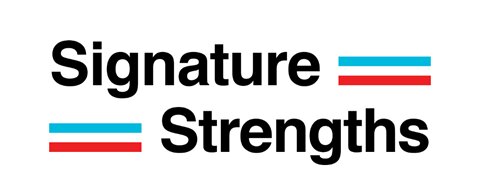
Everything starts with an allegorical skit about the ‘1900’ Art Nouveau style;
‘… Loos began his battle with Art Nouveau a decade before “Ornament and Crime.” A pointed attack comes in 1900, in the form of an allegorical skit about “a poor little rich man” who commissions an Art Nouveau designer to put “Art in each and every thing:” Each room formed a symphony of colours, complete in itself. Walls, wall coverings, furniture, and materials were made to harmonise in the most artful ways. Each household item its own specific place and was integrated with the others in the most wonderful combinations. The architect has forgotten nothing, absolutely nothing. Cigar ashtrays, cutlery, light switches – everything, everything was made by him. … This Gesamtkunstwerk does more than combine architecture, art, and craft; it commingles subject and object: “the individuality of the owner was expressed in every ornament, every form, every nail.” For the Art Nouveau designer this is perfection: “You are complete!” he exults to the owner. But the owner is not so sure: this completion “taxed [his] brain.” Rather than a sanctuary from modern stress, his Art Nouveau interior is another expression of it: “ The happy man suddenly felt deeply, deeply unhappy . . . He was precluded from all future living and striving, developing and desiring. He thought, this is what it means to learn to go about life with one’s own corps. Yes indeed. He is finished. He is complete!” … For the Art Nouveau designer this completion reunites art and life, and all signs of death are banished. For Loos, on the other hand, this triumphant overcoming of limits is a catastrophic loss of the same – the loss of the objective constraints required to define any “future living and striving, developing and desiring.” Far from a transcendence of death, this loss of finitude is a death-in life, as figured in the ultimate trope of in distinction, living “with one’s own corpse.”’
Hal Foster, Design and Crime (And Other Diatribes), Radical Thinkers, Verso Books 2002, pp. 13-5.
Boy Vereecken is an Art Director and Editorial Designer based in Brussels. After graduating from LUCA School of Arts in Ghent (M.A.) and the Werkplaats Typografie (M.A.) in Arnhem, he started his practice in Brussels. From 2012 till 2019 he held the position of Art Director at the Kunsthalle Wien, a position that was rewarded with the German Design Award in 2014. Recent projects include the Art Direction for the Tai Kwun Contemporary’s Hong Kong Art Book Fair and the Belgian Pavilion for the Venice Biennial 2019. In 2016 published Signature Strengths and in 2019 Herewith the Clues, both dealing around notions of publishing history.
Jury
Individual PhD Commission (IPC)
- Supervisor prof. dr. Luc Pauwels (Dept. of Communication Studies, University of Antwerp)
- Supervisor Michel Van Beirendonck (Tutor Graphic Design, Sint Lucas Antwerpen)
- Expert dr. Goran Petrović (Research Affiliate at Ghent University and Assistant Professor at Sciences Po Paris)
- Chair IPC prof. dr. Paolo Favero (Film Studies and Visual Culture, Dept. of Communication Studies, University of Antwerp)
External jury members
- Laura Herman (Curator at La Loge, writer and editor, theory tutor at the Dept. of Contextual Design, Design Academy Eindhoven)
- Sophie Nys (Visual artist, tutor at LUCA School of Arts)
Chair jury ARIA
- Prof. dr. Bart Eeckhout (Dept. of Literature, University of Antwerp)
A study of Applied Tai Chi Movements in Marimba Playing - Chin Cheng Lin (06/03/2019)
Chin Cheng Lin
- 6 March 2019
- Supervisors: Jozef Colpaert, Ludwig Albert and Eugeen Schreurs
Abstract
This interdisciplinary artistic research concerns three aspects of applied Tai Chi movements, educational performing technique and artistic inspiration in marimba playing: investigation of musician’s movements and defining characteristics of marimba playing, development of online instructions with applied Tai Chi approach in marimba playing and evaluation of this approach in marimba education, and application of Tai Chi in musical compositions and discovering the connections between marimba and Tai Chi.
The study examined randomized trials studying the influence of Tai Chi movements on marimba playing and measured two controlled groups, the Tai Chi intervention and the control group, by using 3D motion capture and real-time audio recording.
The research showed that the playing of the marimba became noticeably better. It had a favorable influence on the control of breathing, the feeling of gravity, by the application of Tai Chi movements in the upper and lower body. More research is needed into the physical analysis and the educational method for performing the technique.
Inventing New Marimba Performance from the African Balafon Music Practice - On Ying (Adilia) Yip (31/10/2018)
On Ying (Adilia) Yip
- 31 October 2018
- Supervisors: Henk de Smaele and Kathleen Coessens
Abstract
The aim of this practice-based project is to search for new performance perspectives for the marimba (invented in the 1910s) by inquiring into the West African music tradition—the balafon of the Bobo and Bamana peoples living in Mali and Burkina Faso. Through a triangulation of research methodology—participant-observation, literature and artistic practice—I have gained insights into the artistic experience of stepping into the 'unknown' balafon world.
The written result is a discussion of how I have overcome the obstacles of learning, performing and listening to balafon music, and how these experiences have renewed and enriched my original artistic practice and ideas. Due to the music’s oral tradition, the balafon polyrhythm and melodic materials are embodied in forms of bimanual coordination patterns rather than symbolic representation. Music-making is largely informed by the performer's motoric sensory, and body movement is given a crucial role in music communication and sensory perception.
The second purpose of this research is, therefore, to apply these balafon practices to Western performance. This yields as artistic outcome—five commissioned compositions for the marimba and a concert program 'In the Heat of the Moment'.
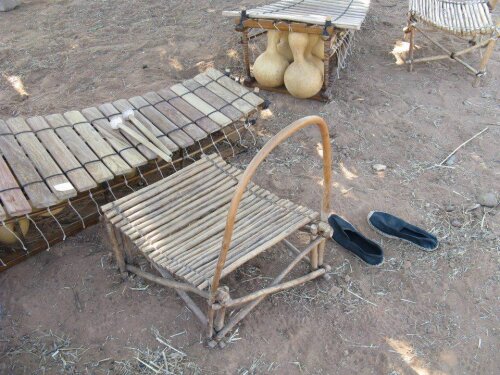
The Wind Egg - Haseeb Ahmed (03/10/2018)
Haseeb Ahmed
- 3 October 2018
- Supervisors: Prof. Staf Van Tendeloo and Werner Van dermeersch
Abstract
Haseeb Ahmed’s art practice integrates methodologies from the hard sciences in search of a techno-poetics. His exhibition at M HKA, as part of his public defence unfolds his ongoing Wind Egg experiment.
The concept of ‘wind eggs’ postulates that animals and people can be fertilised by the wind – a belief held for millennia by ancient Egyptian, Arab, Indian, European and Chinese cultures. Ahmed has worked to realise this idea with state-of-the-art wind tunnel technology at the von Karman Institute for Fluid Dynamics in Belgium.
In the process of personifying the wind he blends art and aeronautics, myth and technology, reflecting the human capacity to project empathetic sensibilities onto nonhuman things. A project that moves from antiquity to astrobiology, the exhibition will function as a test-site for imagining the possibilities for humans to reproduce without men and with the wind.
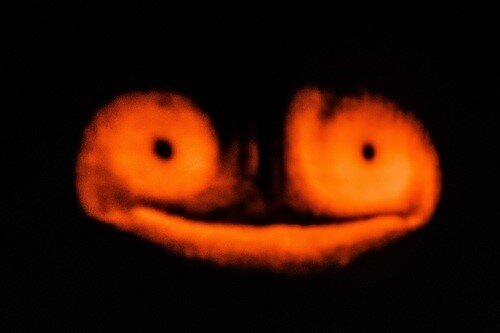
Ahmed received his Masters from the MIT Program in Art, Culture, and Technology and received his Bachelor of Fine Arts at the School of the Art Institute of Chicago. He was previously also a resident at the Jan van Eyck Academie in Maastricht. His work has been exhibited internationally including at the Museum of Contemporary Art Chicago, the Gothenburg International Biennial of Contemporary Art, and the Museum Barengasse Zurich. Haseeb Ahmed is based in Brussels.
Jury:
Individual PhD Commisssion
- Prof. Dr. Florian Dombois (visual artist, professor and head of Research Focus in Transdisciplinarity at Zurich University of the Arts)
- Prof. dr. Staf Van Tendeloo (University of Antwerp, EMAT Research Laboratory)
- Werner Van dermeersch (architect, professor at St Lucas School of Arts Antwerp)
- Prof. dr. Pascal Gielen (University of Antwerp, ARIA, CCQO)
External jury members
Prof. dr. Beatrice de Gelder (director of the Brain and Emotion Laboratory, Maastricht University)
Prof. dr. Olivier Chazot (Head of Aeronautics and Aerospace department at Von Karman Institute for Fluid Dynamics, Brussels)
Chairman jury
Prof. dr. Bart Eeckhout (University of Antwerp, ARIA)
Revolutionizing the Jazz Bass: The Life and Music of Jimmie Blanton - Matthias Heyman (23/03/2018)
Matthias Heyman
- 23 March 2018
- Supervisors: Alexander Dhoest and Eugeen Schreurs
Abstract
This research project offers a comprehensive study of the life, music, and legacy of jazz bass player James 'Jimmie' Blanton, Jr. (1918–1942). Best known for his tenure with Duke Ellington and His Orchestra between 1939 and 1941, Blanton is widely regarded as one of the key figures in the development of jazz bass playing. From 1946 on, an iconic narrative came into being that established him as an artistic hero in the pantheon of jazz (bass) history. In most literature, such icons are treated in generalizing, uncritical manners, resulting in a flawed, limited understanding of Blanton. Previous studies have primarily focused on his recorded solos from 1940, and rarely compare his work to that of his fellow bass players. This research is the first to consider Blanton's complete recorded body of work taken from his entire five-year career, including a large number of broadcasts and live versions. Furthermore, considerable attention is dedicated to his accompaniments, and his work is properly contextualized with a selection of that of his peers.
Through a combination of biography and musical analyses, I reevaluate the importance this bassist holds in the history of jazz, adding nuance to his iconic status. This is achieved through an interdisciplinary methodology, building upon such diverse methods as archival research, reception study, music analysis, visual analysis, and historically informed performance practice. As such, this research, the first one in Belgium to focus on jazz, offers new insights into the historical development of jazz bass playing up to the 1940s, into the social and musical milieus Blanton belonged to, and into the role Ellington played in Blanton's development as a performer. Furthermore, a number of technical matters are addressed, in particular his performance posture and the impact recording technology had on his reception.
Overall, I argue that Blanton did indeed play a transformative role in the development of string bass playing in jazz, yet should also be considered as part of a continuum of bass players that each in their own way contributed to this evolution. While Blanton's approach laid the foundation for how the majority of future bassist soloed and accompanied, he himself relied in part on the groundworks established by other bassists such as Wellman Braud and Walter Page, his own musical influences such as tenor saxophonist Coleman Hawkins and pianist Art Tatum, and Ellington's earlier experiments in writing for the string bass.
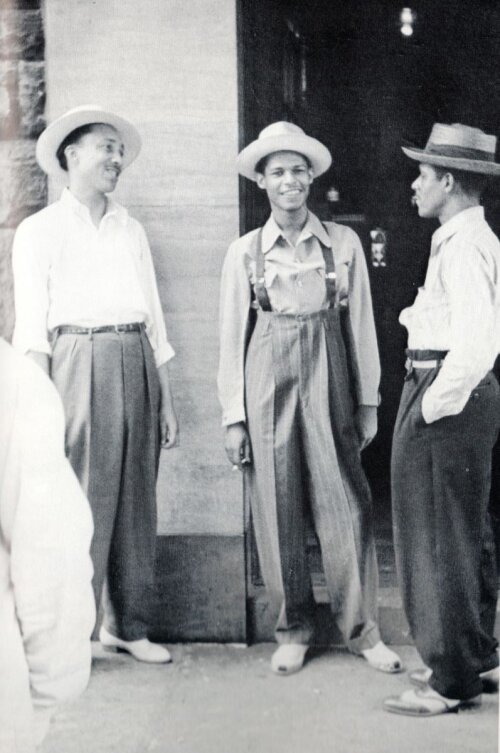
Exhibiting Knowledge - Wesley Meuris (01/09/2017)
Wesley Meuris
- 1 September 2019
- Supervisors: Herwig Leirs and Werner Van dermeersch
Abstract
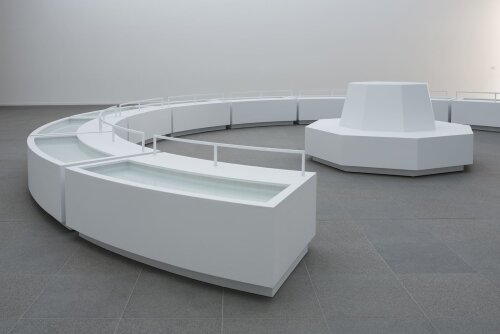
Sound Presence - Jan Schacher (18/04/2017)
Jan Schacher
- 18 April 2017
- Supervisors: Prof. dr. Erik Myin and Prof. dr. Kathleen Coessens
Cylindrical Anamorphosis. Thaumaturgical Origins and Contemporary Workings - Rudi Knoops (16/02/2017)
Rudi Knoops - Cylindrical Anamorphosis.
Thaumaturgical Origins and Contemporary Workings
Joint PhD KULeuven - UAntwerp
- 16 February 2017
- Supervisor KUL: Willem Hesling
- Supervisor UAntwerp: Kurt Vanhoutte
- Supervisor LUCA: Bart Geerts
Abstract
The approach in both my arts practice and my PhD research is inspired by media archaeology: look in the rear-view mirror, gauge the affordances of an older and maybe analogue media technology, and explore how it can re-inject curiosity and wonder into our relationship with the techno aesthetics of contemporary society.Cylindrical anamorphosis is one such seemingly obsolete visual media technology. It has its origins in a seventeenth century Baroque context of artificial magic: a distorted image can be observed in its reconstituted form through reflection in a cylindrical mirror. The analogue cylindrical mirror has the strange pre-digital processual power to generate images based on the position of the observer. In our media-saturated world where digital processual images are becoming standard, cylindrical anamorphosis uses its own analogue processual power and re-injects its wild analogue magic back into the twenty-first century digital media apparatus. However, by using moving images that are digitally manipulated, cylindrical anamorphosis is contaminated by the present, and becomes a hybrid contemporary version of artificial magic.The appropriation of cylindrical anamorphosis is the central research topic in my practice-based PhD. A series of appropriations enables—or even demands—cross-links to other art disciplines such as music and dance, and a media archaeology inspired methodology of short-circuiting past and present can fashion new and imaginary media forms that may provide new insights into how we engage with media, and how media define us as human beings.
Defended PhD projects 2016
Karin Hanssen, The borrowed gaze
Charlotte Lybeer, Lifestyle Supermarket
Steve Van den Bosch, Het kunstwerk als productief verdwijnpunt
Frederik De Bleser, De impact van generatieve software op grafisch ontwerp
Ludwig Albert, Movin’ grips: body controlled marimba sound production
Defended PhD projects 2015
Lieven Segers, The joke is on me
Alexandra Verschueren, Building Garments: Researching fashion design through architecture
Defended PhD projects 2014
Nico Dockx, The New Conversations
Annelies Focquaert, Jacques-Nicolas Lemmens: leven en werk van een Belgisch organist, gezien vanuit de 19e-eeuwse orgelpraktijk
Defended PhD projects 2012
Tom De Smedt, Modeling Creativity: Case Studies in Python
Hans Theys, Het kijkbeeld
Stefan Van Puymbroeck, Maddalena
Defended PhD projects 2010
Spank Moons, In Questa Tomba Oscura: Pixelation as a strategy of (dis)appearance
Bruno Van Dijck, Topografische resonanties
Defended PhD projects 2009
Yves Senden, Muzikale interpretatie vanuit het pragmaticisme van Peirce
Ewald Demeyere, A Contextual, Text-Critical Analysis of Johann Sebastian Bach’s Art of Fugue
Defended PhD projects 2008
Dirk Van der Eecken, De kunst van het onzichtbare
Pat Harris, Reduction within Figurative Painting